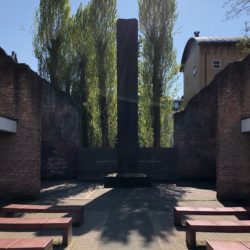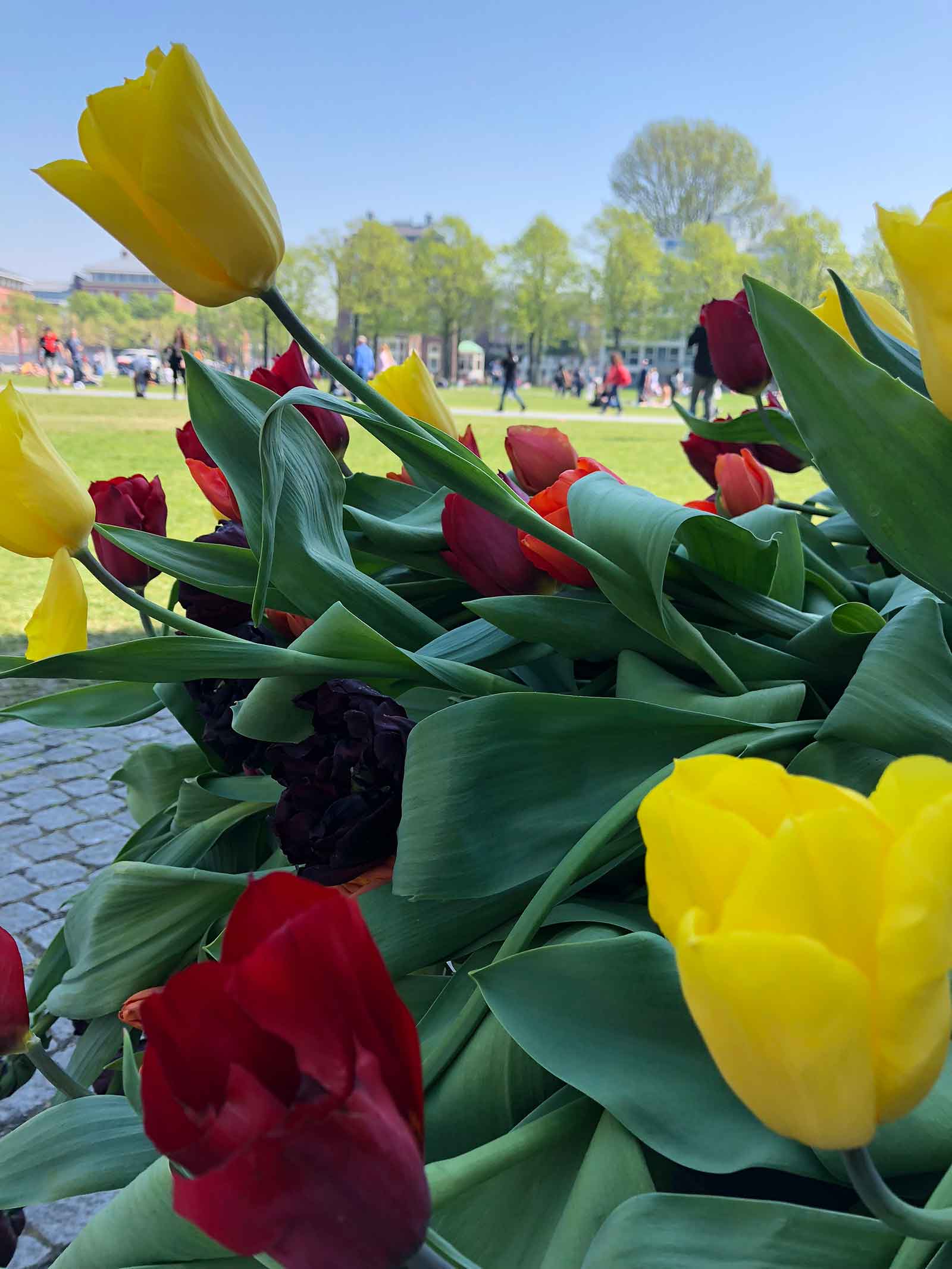
“Do you know how many people are shocked that I didn’t grow up in a windmill wearing wooden shoes?”
My Airbnb host, Edwin, a fellow traveler also staying at the Airbnb, Nicole, and I were out for dinner and drinks one night when the discussion turned to stereotypes people held about where will all live (The Netherlands, California and New York, respectively). With much exasperation, Edwin detailed the many clueless people who thought the Dutch still clamor around in wooden shoes by day, all the while turning into beatnik hippies, smoking pot and hitting up the Red Light District every night. I hate to break it to you, but the only place you’ll find brightly-painted wooden shows in Amsterdam is in a souvenir shop.
Still, there is one stereotype about The Netherlands that is actually true. The Dutch love their tulips and they can be found everywhere throughout the capital and greater countryside. Many wrongly believe that tulips originated in The Netherlands, but they actually are native to the “Stans” of Central Asia. Dutch explorers brought them back to Amsterdam during the Dutch Golden Age, prompting “tulipmania” to sweep the nation. Tulip bulbs became so valuable that people started using the soon-to-be flowers as a form of currency; a few hundred bulbs could even buy you a house along the canals. The tulip-trading bubble eventually burst, but the Dutch fascination with tulips has never waned.
March through May has officially been dubbed “tulip season” and you can buy the bulbs in a floating market on one of the city’s many canals. (Beware that you may have trouble taking some flowers through customs on your return to your home country. Check your entry restrictions before buying any bulbs.) The Netherlands is the world’s largest producer of tulips, exporting roughly three billion bulbs every year.
Vondelpark
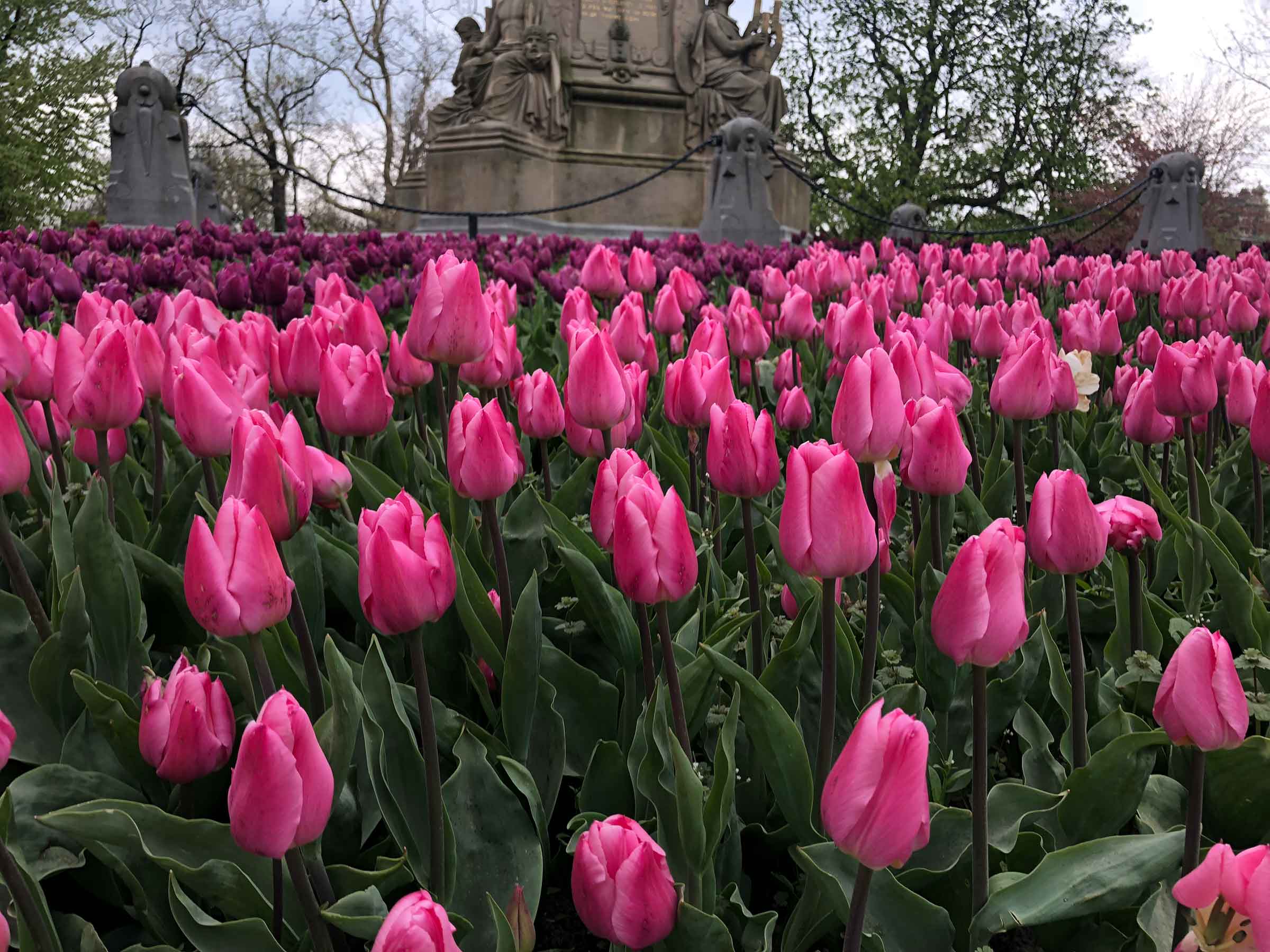
After establishing my newly-found friendship with a French student named Sam at the Stedelijk Museum, we decided to balance out our intake of contemporary art with some nature at the nearby and much-ballyhooed Vondelpark, the “Central Park” of Amsterdam. At 47 hectares (12o acres), Vondelpark is easily Amsterdam’s largest green space and it’s physical size is rivaled only by its popularity. Locals bike and jog the pathways everyday, competing for space with the roughly 10 million visitors the park receives each year.
Vondelpark opened in 1864, when a group of city planners turned the marshland outside the Grachtengordel into a public park named after the Dutch poet Joost van der Vondel, whose statue greets you at the main entrance. The park contains a bandstand, amphitheater, rose garden and numerous playgrounds for the kids. Of course, you can find tulips throughout the grounds, their vibrant colors accentuated against the rainy, spring sky.
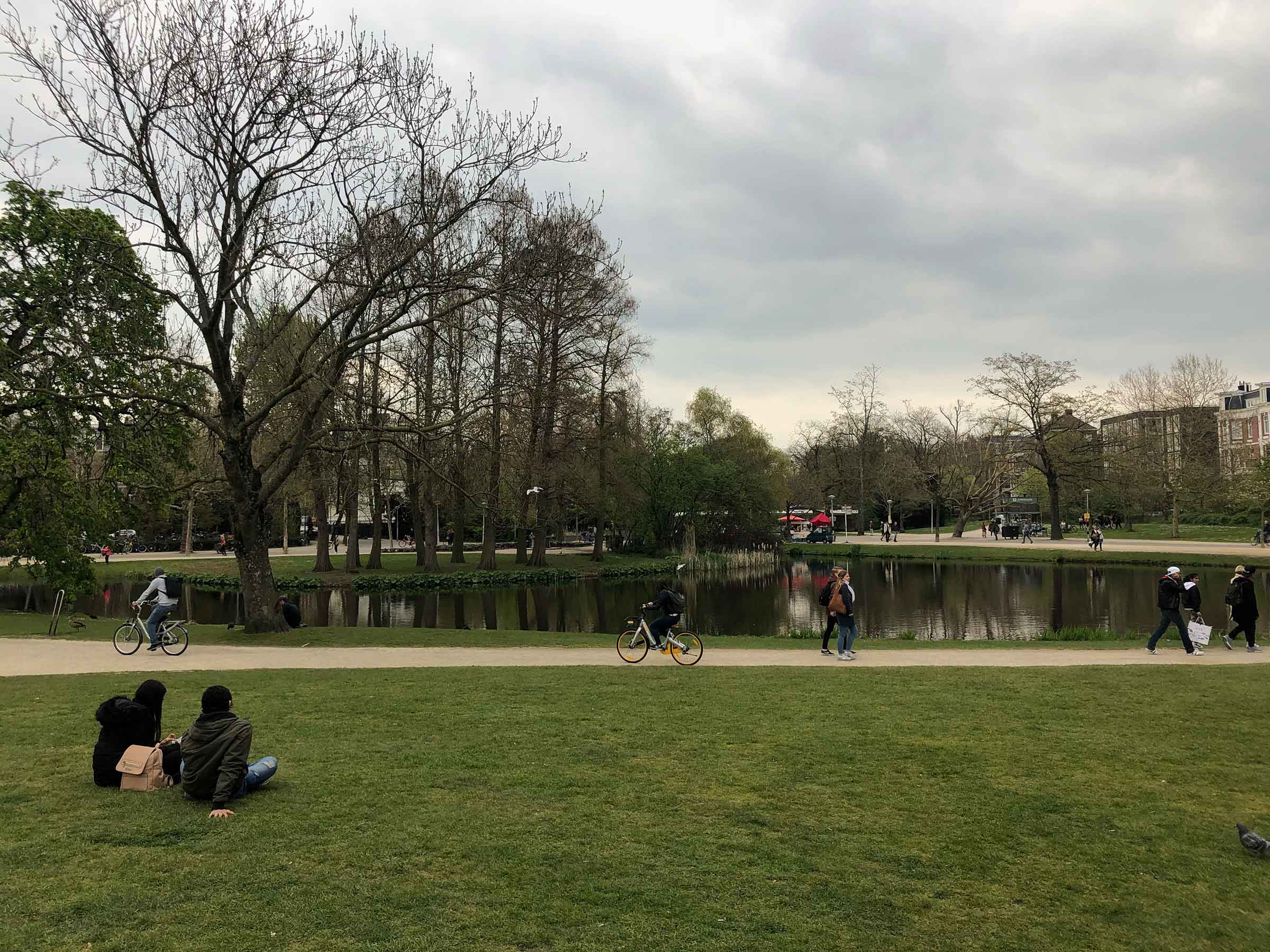
The park’s history also reflects Amsterdam’s liberal ideals. During the 1960s and 70s, the counter-culture camped out in Vondelpark, bringing with them all the peace, love and sexual liberation you can imagine. Public sex became such an integral part of the park’s identity that the city government actually legalized having sex in Vondelpark in 2008! (There are only two rules: confine your activities to after dark and no sex near the playgrounds.) I’m sure this revelation will have you have passing the smelling salts to certain uptight tourists, but to the Dutch it’s all very normal and treated with the utmost nonchalance.
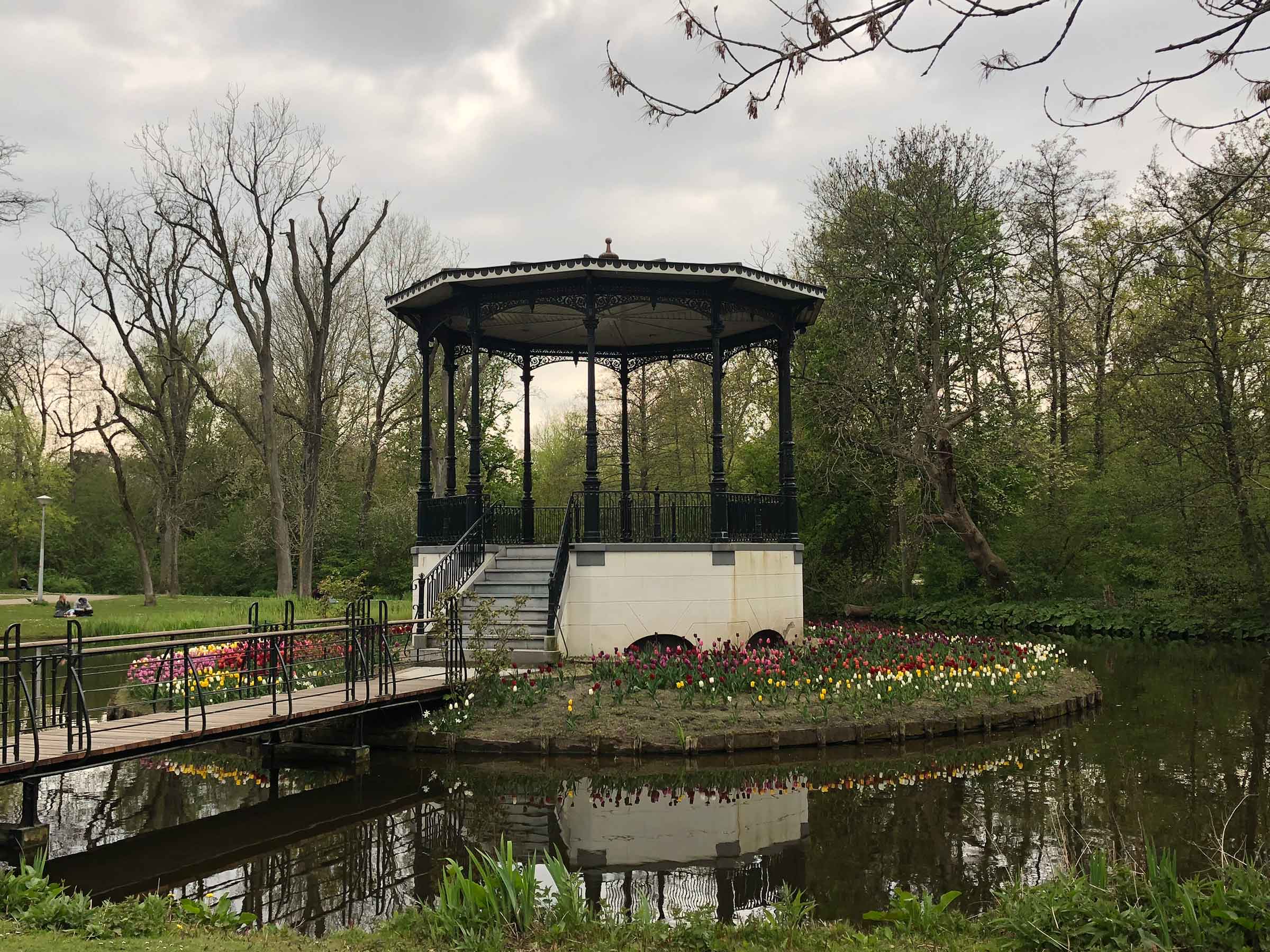
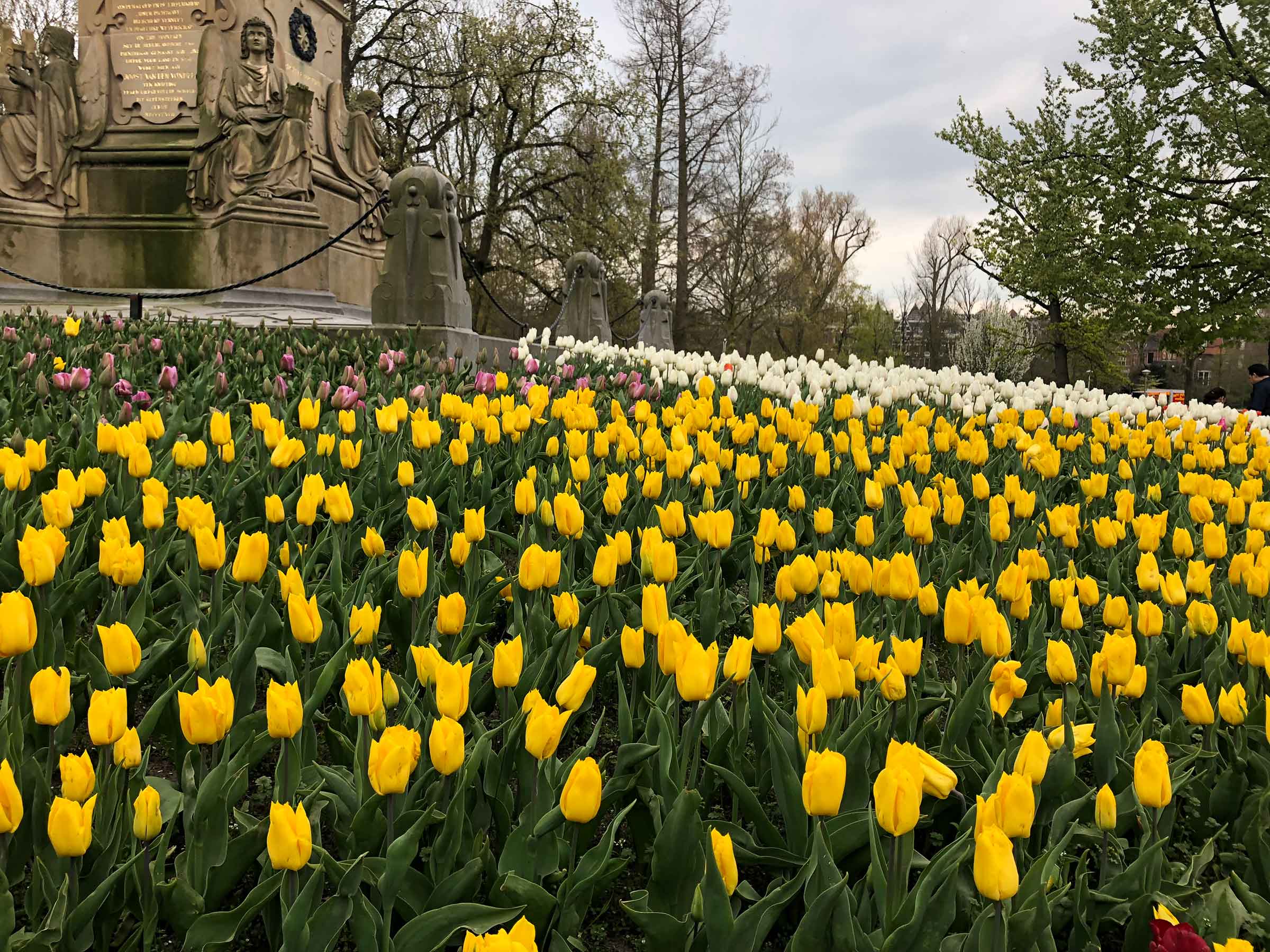
Museumplein (Museum Square)
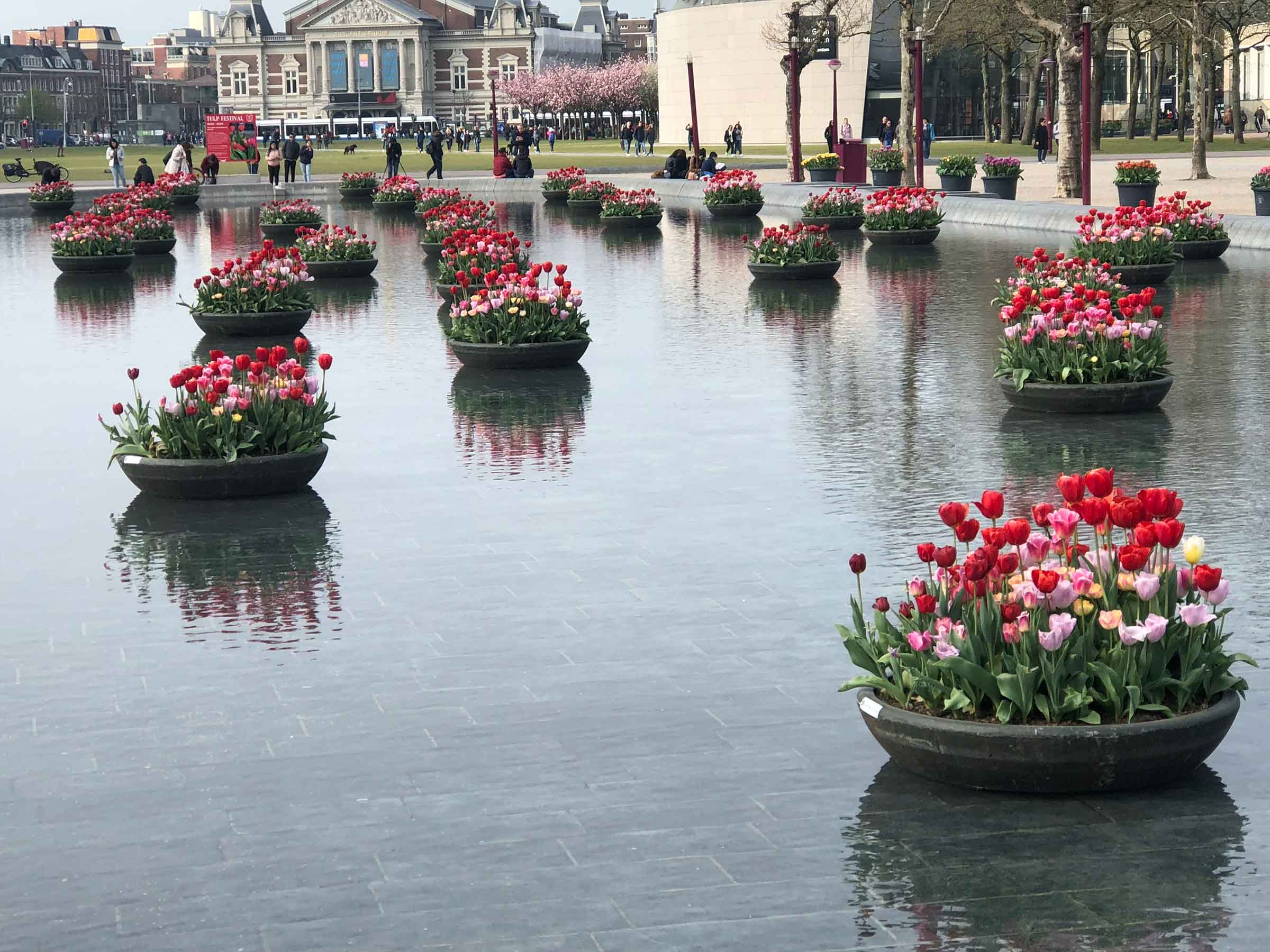
Museumplein, which is flanked by four art museums, as well as the Koninklijk Concertgebouw (Royal Concert Hall), has a beautiful water feature that gives of the illusion of bowls of tulips lazily gliding across the glassy surface. The square becomes very crowded by midday and although you are welcome to picnic on the grass, there are less-trafficked parks in Amsterdam if you need to escape the hustle and bustle of the touristy center. If you have an early morning entry to any of the art museums, show up 30 minutes before your start time and check out the small garden and fountains behind the Rijksmuseum. They’re lovely.
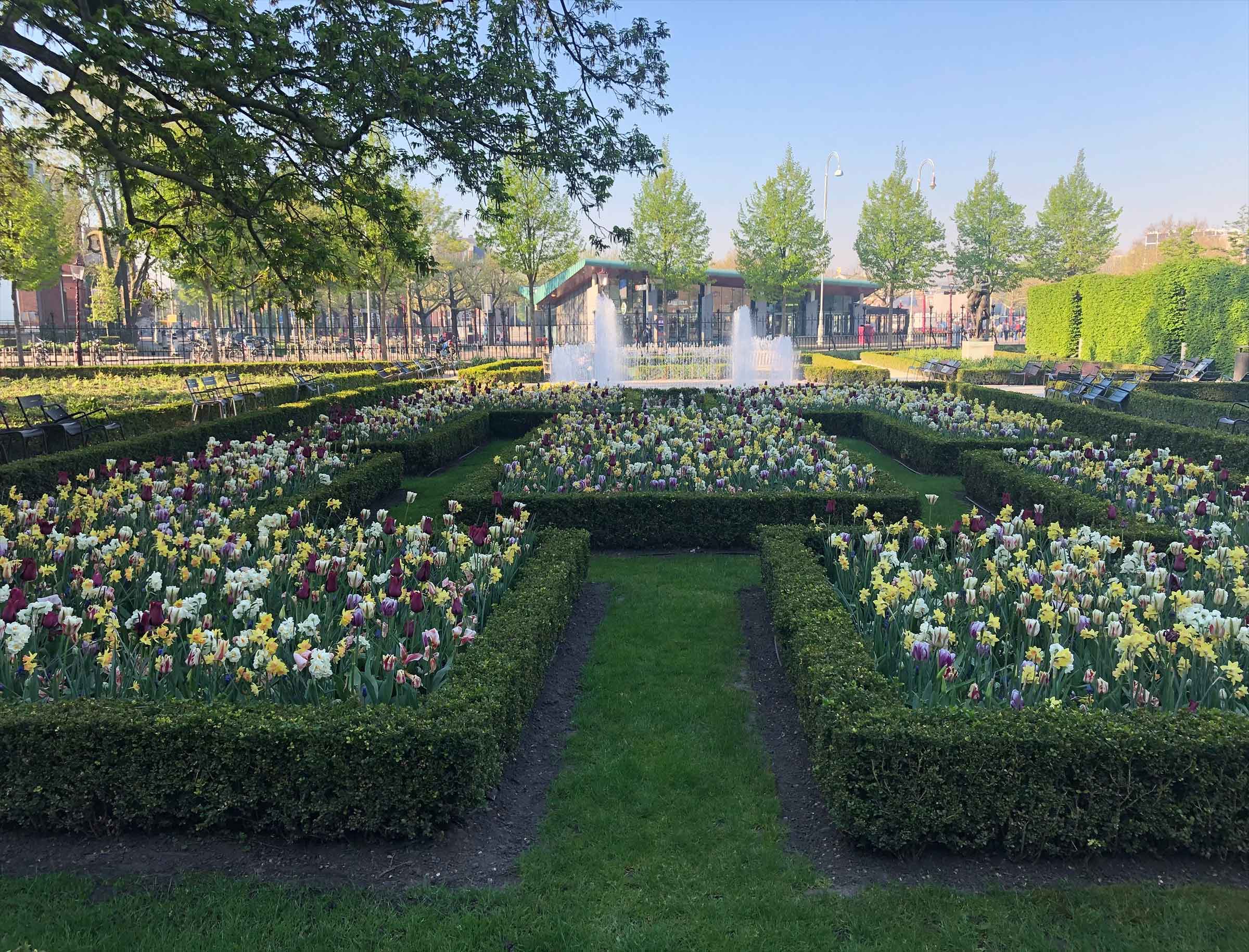
Oosterpark
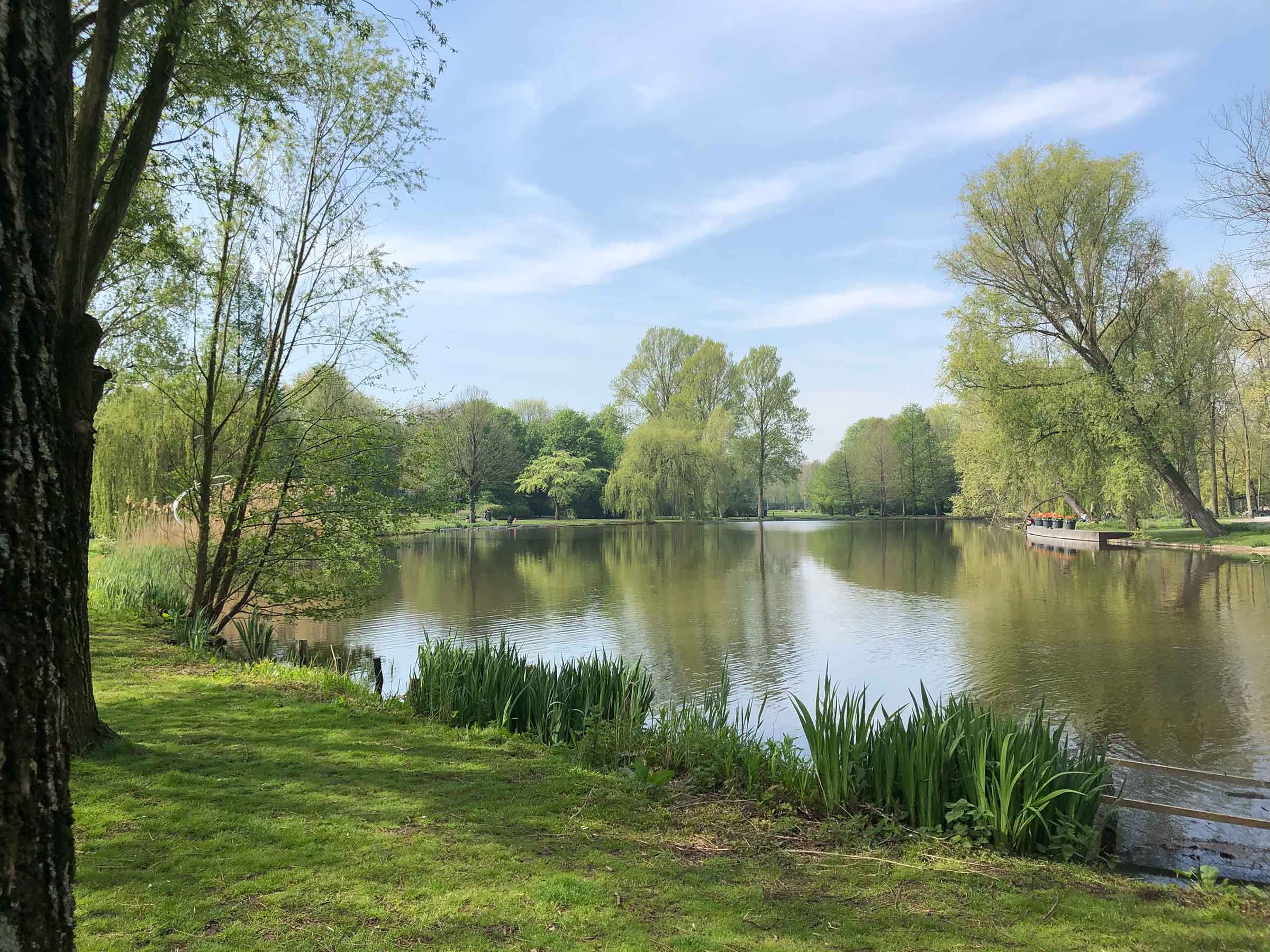
Vondelpark may receive all the attention, but Oosterpark was my favorite green space in Amsterdam. Tucked away in an easterly neighborhood of the capital, Oosterpark appears to be an idyllic piece of Dutch countryside transplanted into the city. A footpath around the lake gives way to a set of tennis courts and exercise equipment, the latter of which a set of seniors were dutifully using in the afternoon hours. Oosterpark is the perfect spot for some peace and…wait. What’s that noise?
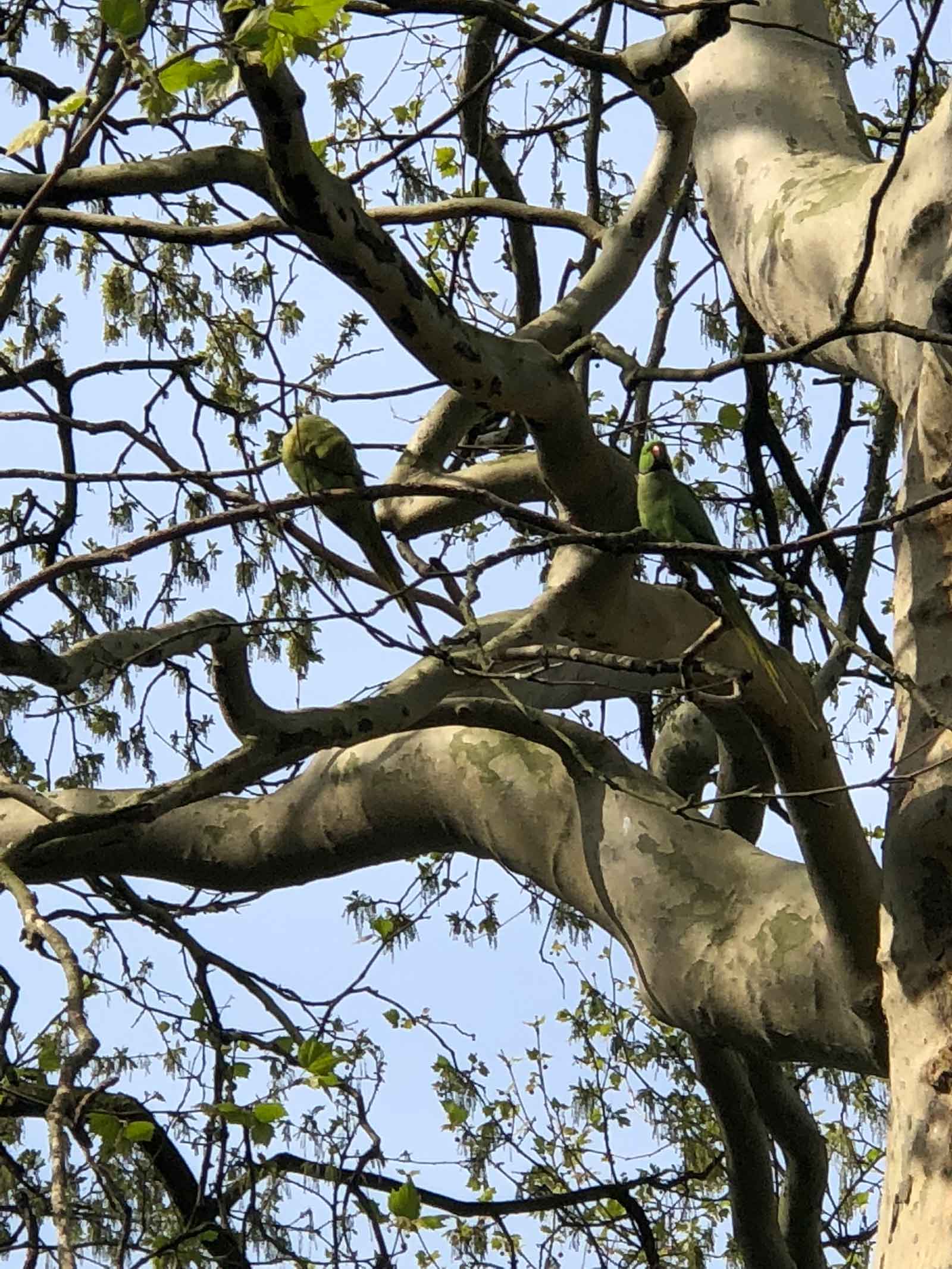
Did some Star-Trek magic just occur? Was I beamed up and set down in the tropical rainforest? What are all these bright green parakeets doing in Oosterpark?
My mind wasn’t playing tricks on me. There are indeed approximately 4000 feral parakeets in Amsterdam, with Oosterpark being one of their main nesting grounds. No one quite knows how these birds were introduced into the urban ecosystem; theories include a mating pair having escaped from the zoo or perhaps a truck carrying the exotic animals was not latched properly and some got away. Whatever the case may be, the birds were first noticed in the 1970s and have become a mainstay in the Dutch capital ever since. Given how insanely cool I found this to be, I’m shocked Oosterpark hasn’t morphed into a main tourist attraction in its own right. Somehow the parakeets have flown under the radar (sorry, I couldn’t resist), and if you visit the park, you’ll have them all to yourself.
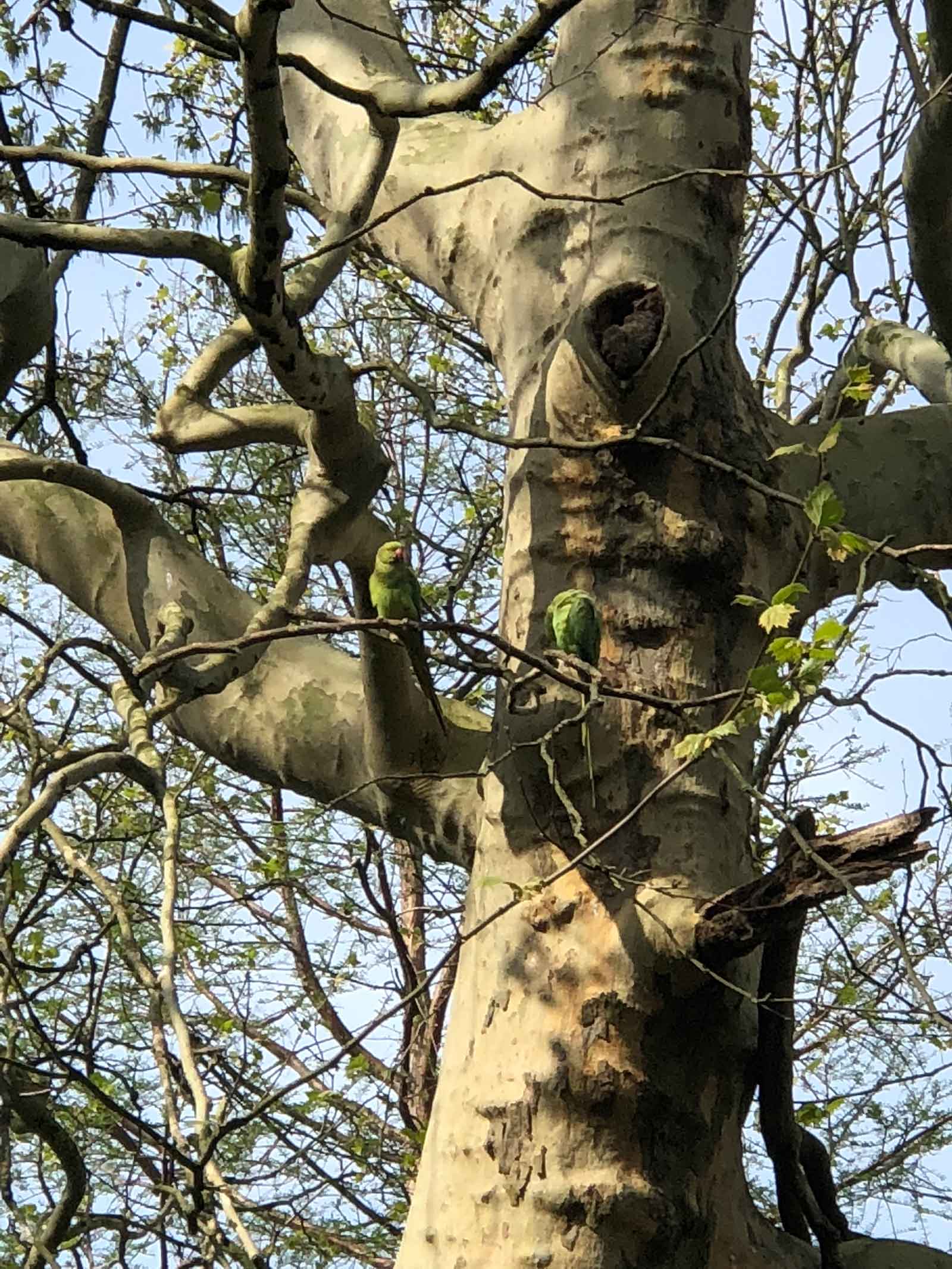
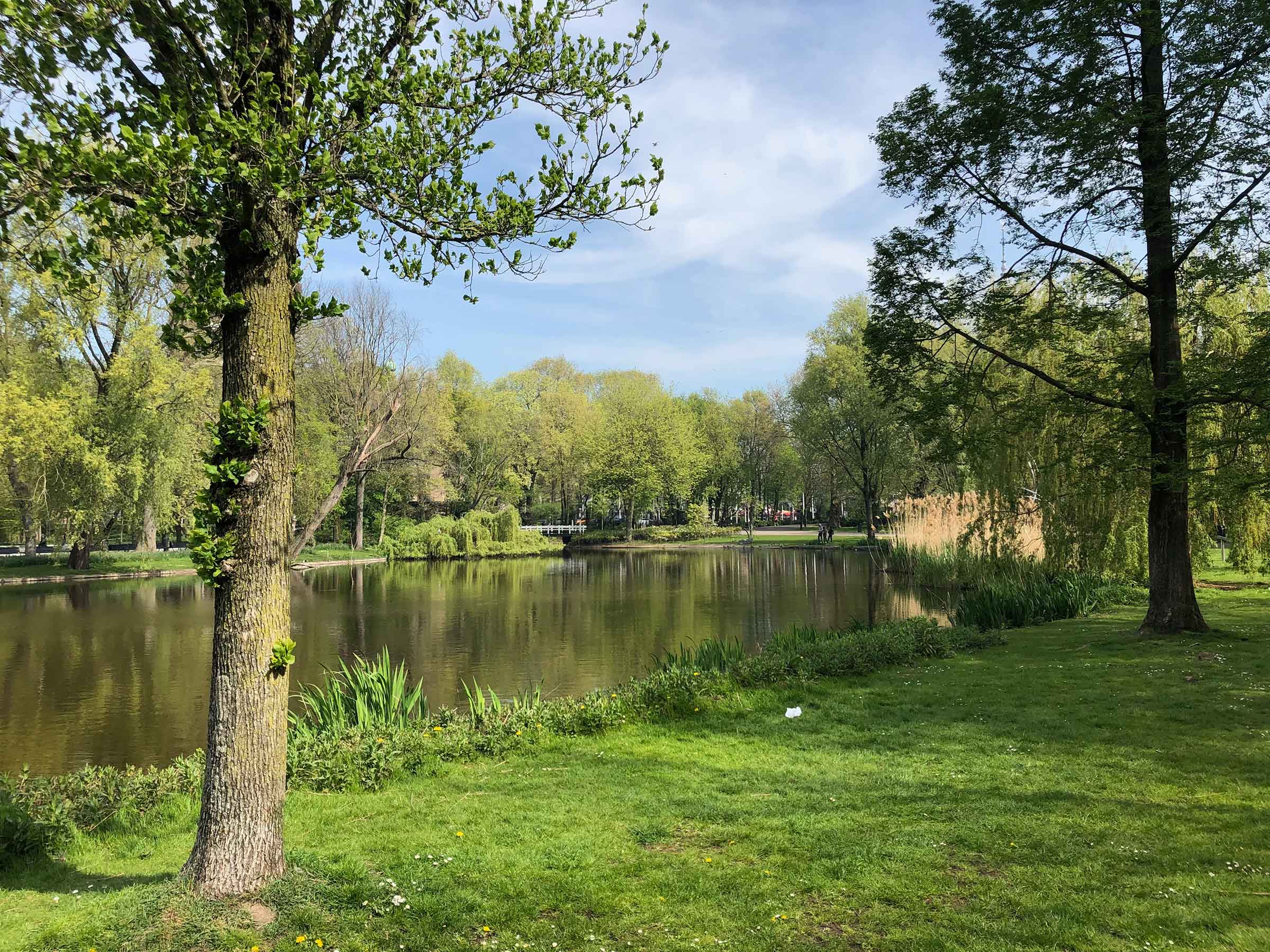
If Vondelpark feels somewhat like Amsterdam’s show pony, Oosterpark is homey and lived-in. (The parakeets add a surreal quality to the surroundings, but their eccentric presence doesn’t detract from the park’s otherwise down-to-earth vibe.) It’s easy to see the premium that the Dutch place on the environment and healthy living when visiting a site like Oosterpark. The Dutch enjoy a high standard of living, and its spaces like this that make the capital so attractive for those who can afford it.
Hortus Botanicus
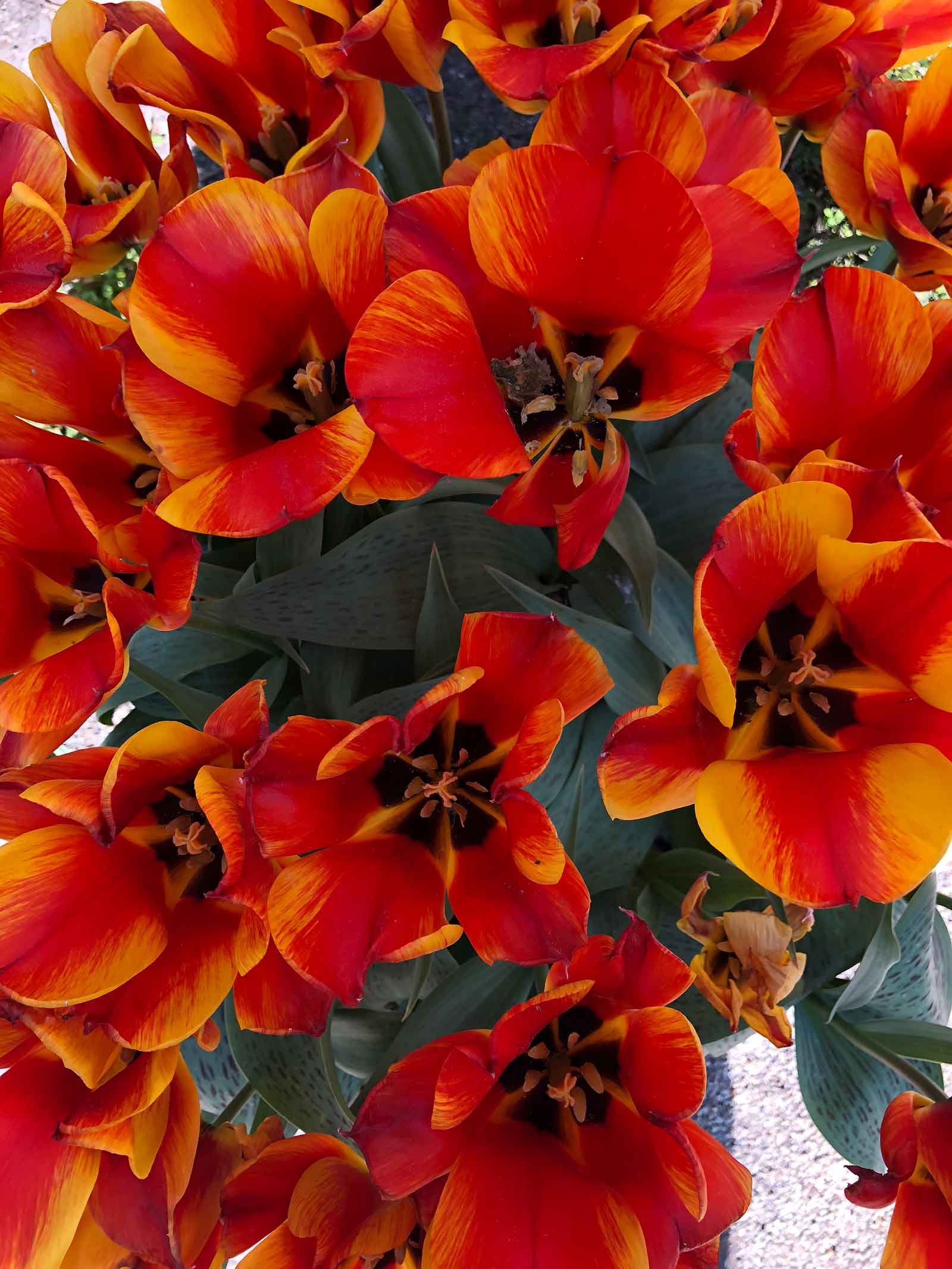
Still craving more natural beauty, Sam and I made our way to the Plantage (historic Jewish district) one morning to visit the Hortus Bontanicus (Botanical Garden) and the Artis Royal Zoo. The Hortus Botanicus was founded in 1638 when it was known by its former name, the Hortus Medicus, making it one of the oldest botanical gardens in the world. The Dutch Golden Age was in full swing, but Amsterdam had fallen victim to a resurgence of the plague. The garden’s original purpose was to act as a medicinal storehouse for the plants that traders brought home from Asia while working for the Dutch East India Company. Pharmacists during the 17th Century were given their final exams in the garden before earning their degrees. The oldest plant in the collection is over 300 years old.
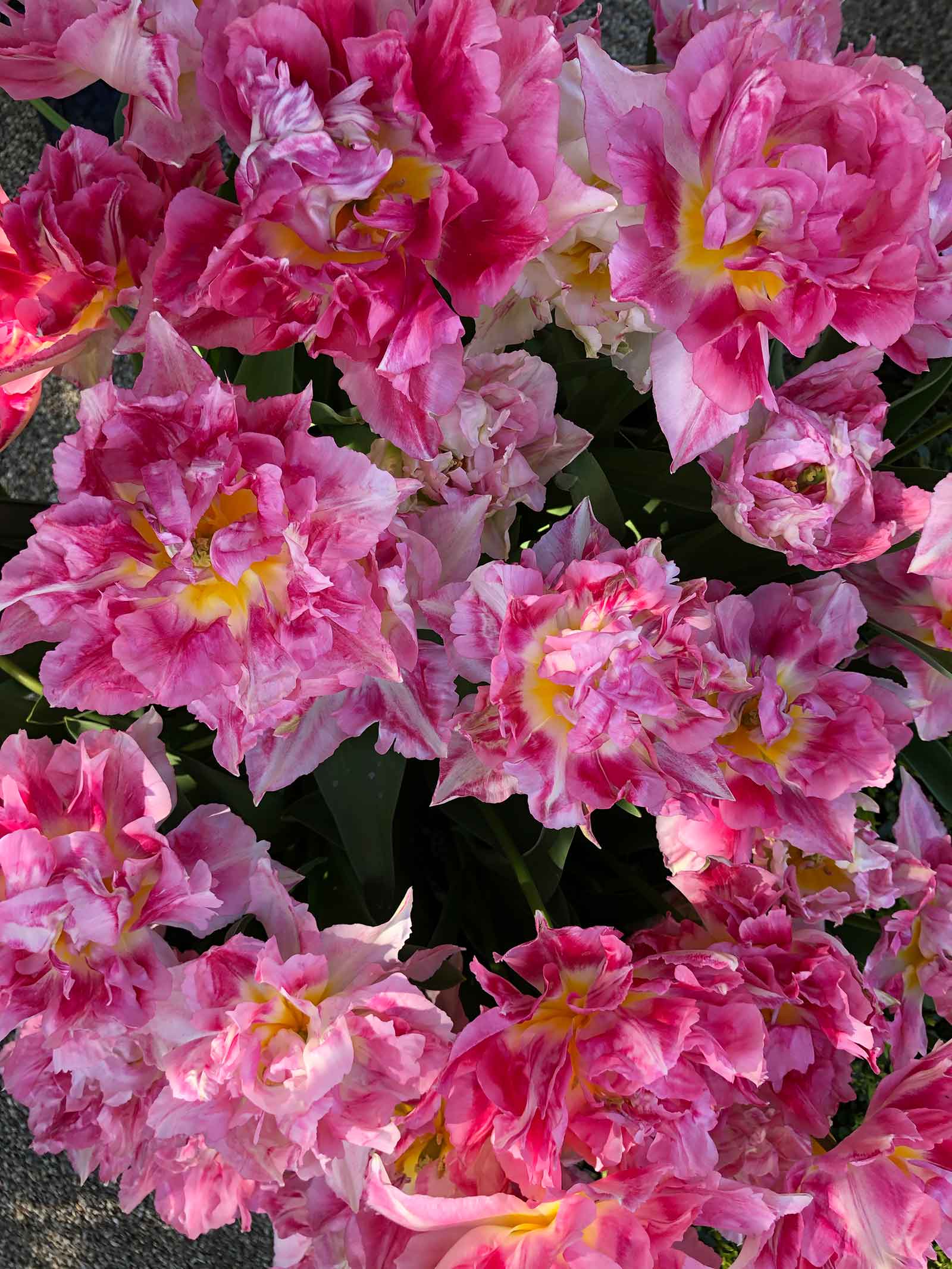
The Hortus Botanicus eventually opened to the public and has expanded several times throughout its history. There are currently over 4000 species of plants on the grounds, including a giant water lily, which is only on display in a heated pond from June until September. Personally, I found spring to be the perfect time of year to visit the gardens; all the tulips were in full bloom and the trees were sprouting their leaves after the winter chill. The botanical garden is also home to a butterfly hot house that allows you to able through their habitat and observe them up-close without any barriers.
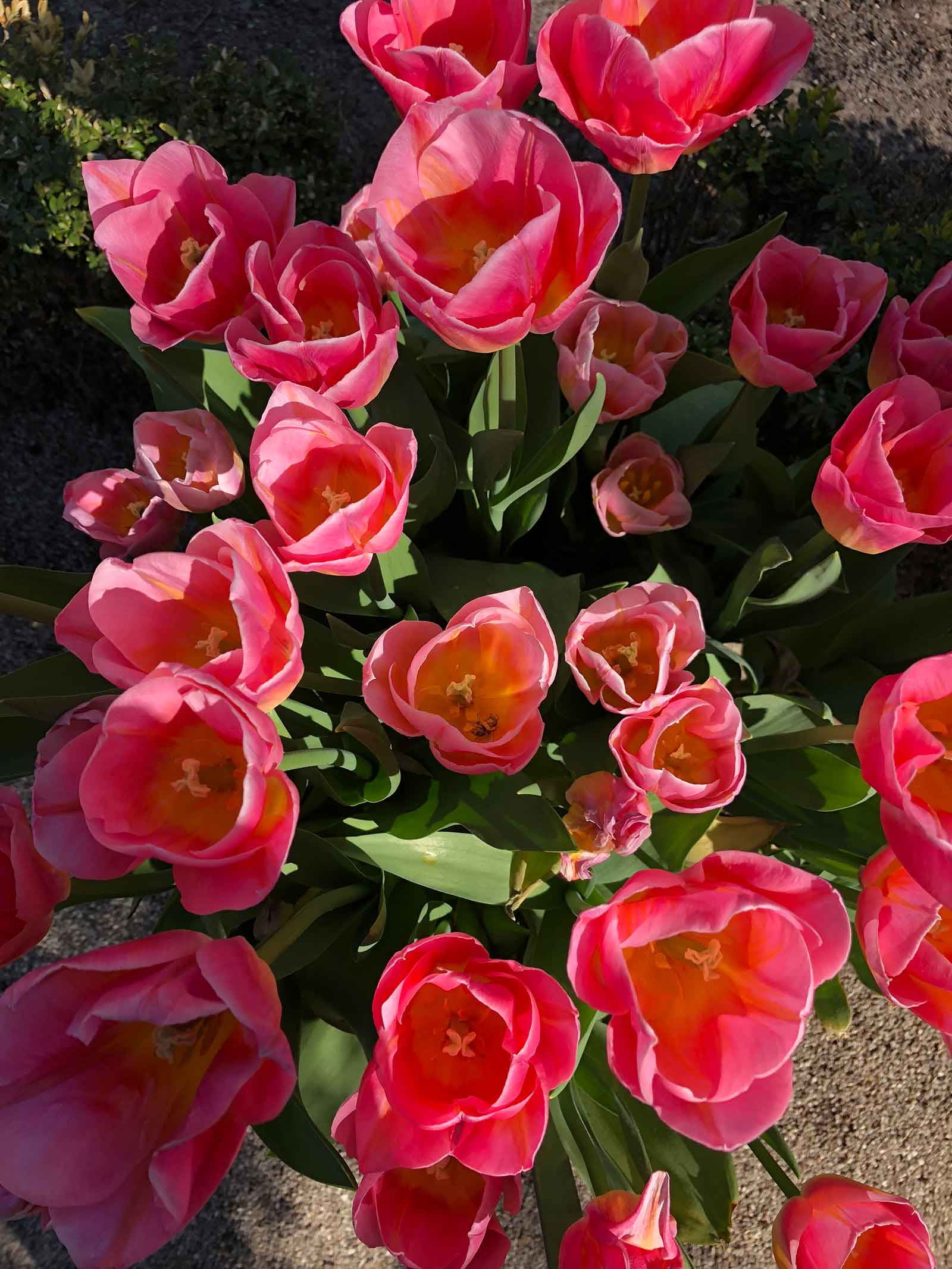
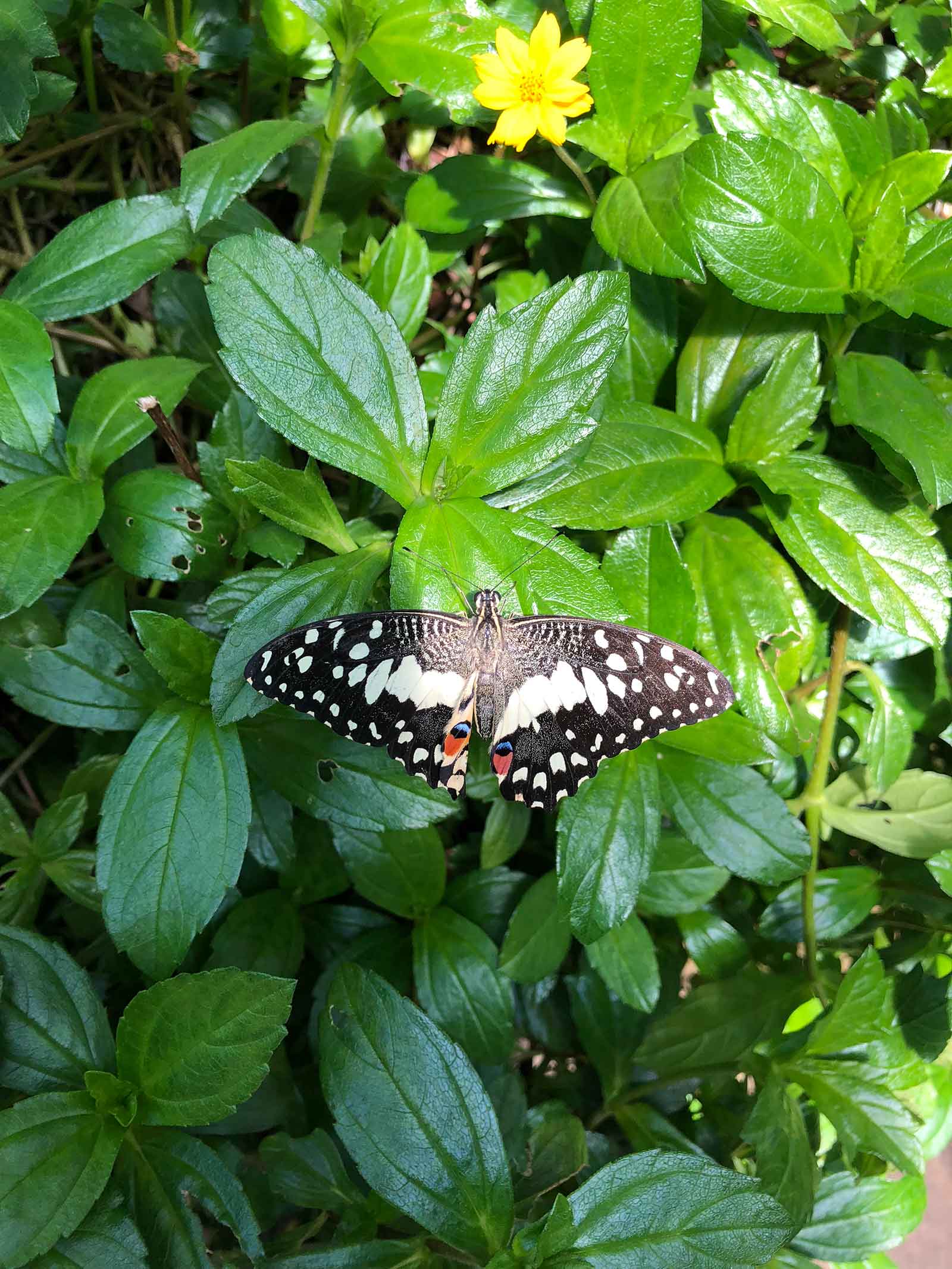
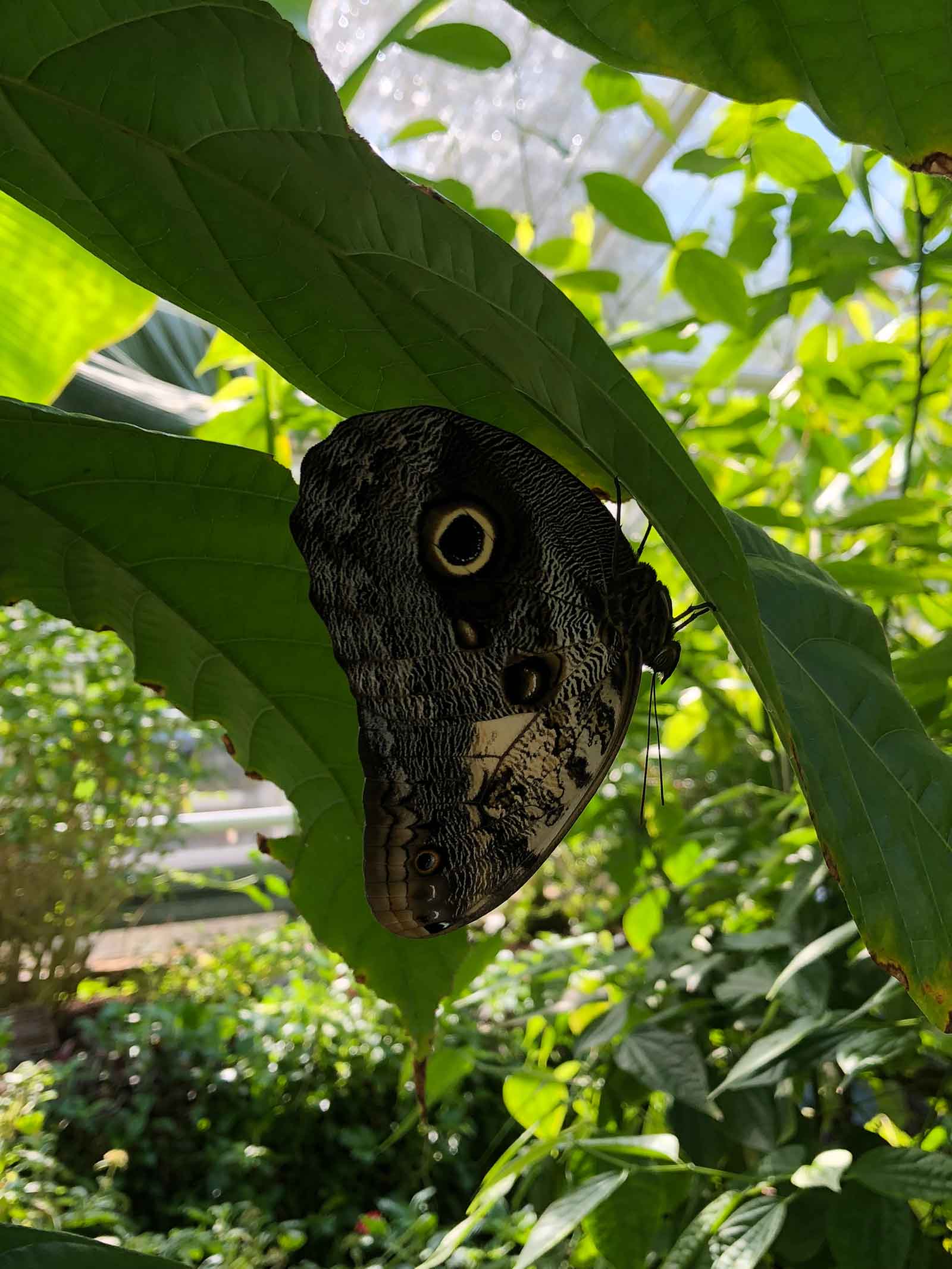
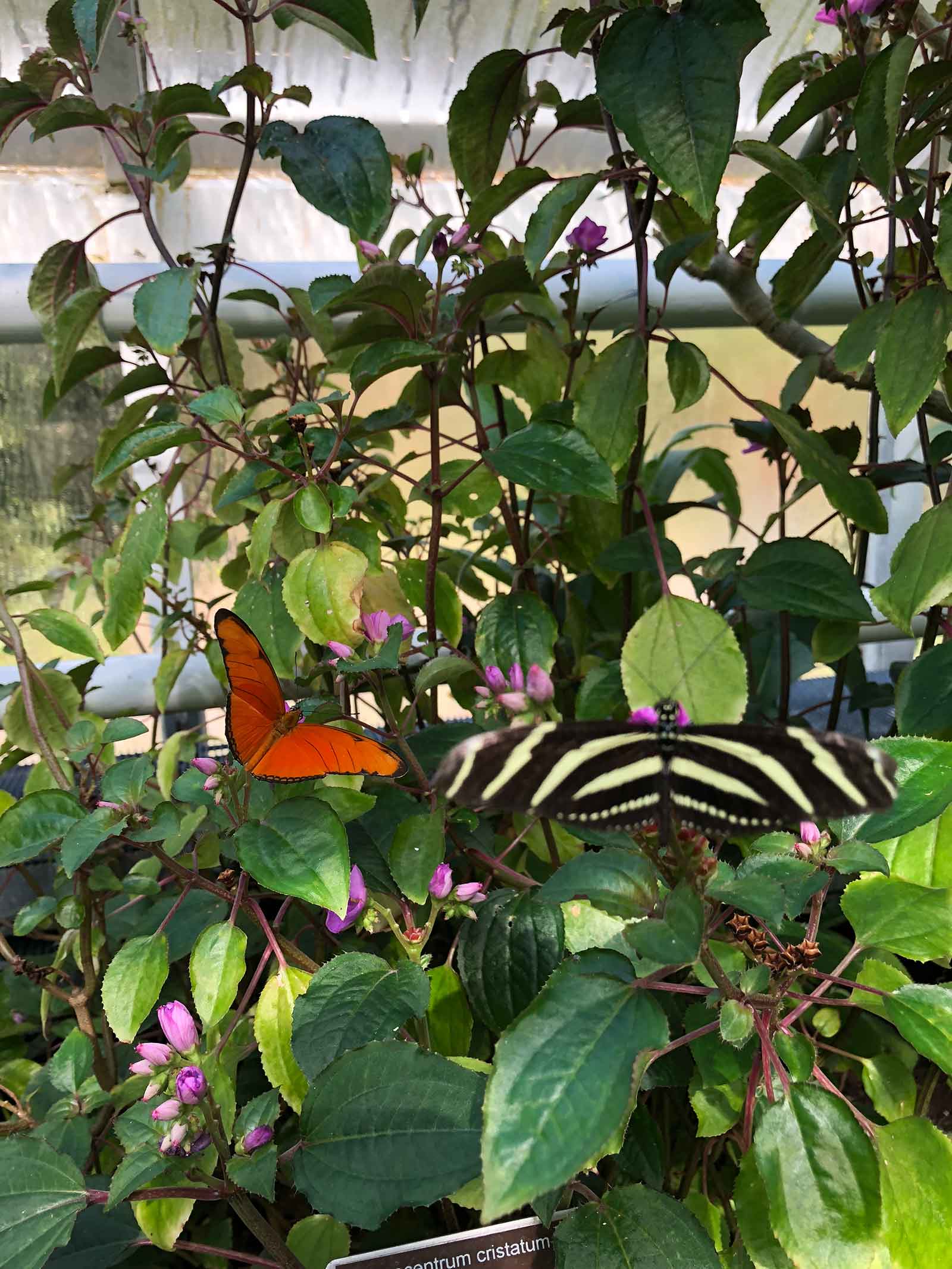
The most recent additions to the Hortus Botanicus were three hot houses that allow plants from tropical climates to flourish and thrive. We often think about protecting endangered species of animals, but plant species become endangered as well. Botanists at the garden have amassed these threatened species from the Amazon, Central Africa and Australia in order to focus on collecting their seeds and reintroducing them to their native habitats.
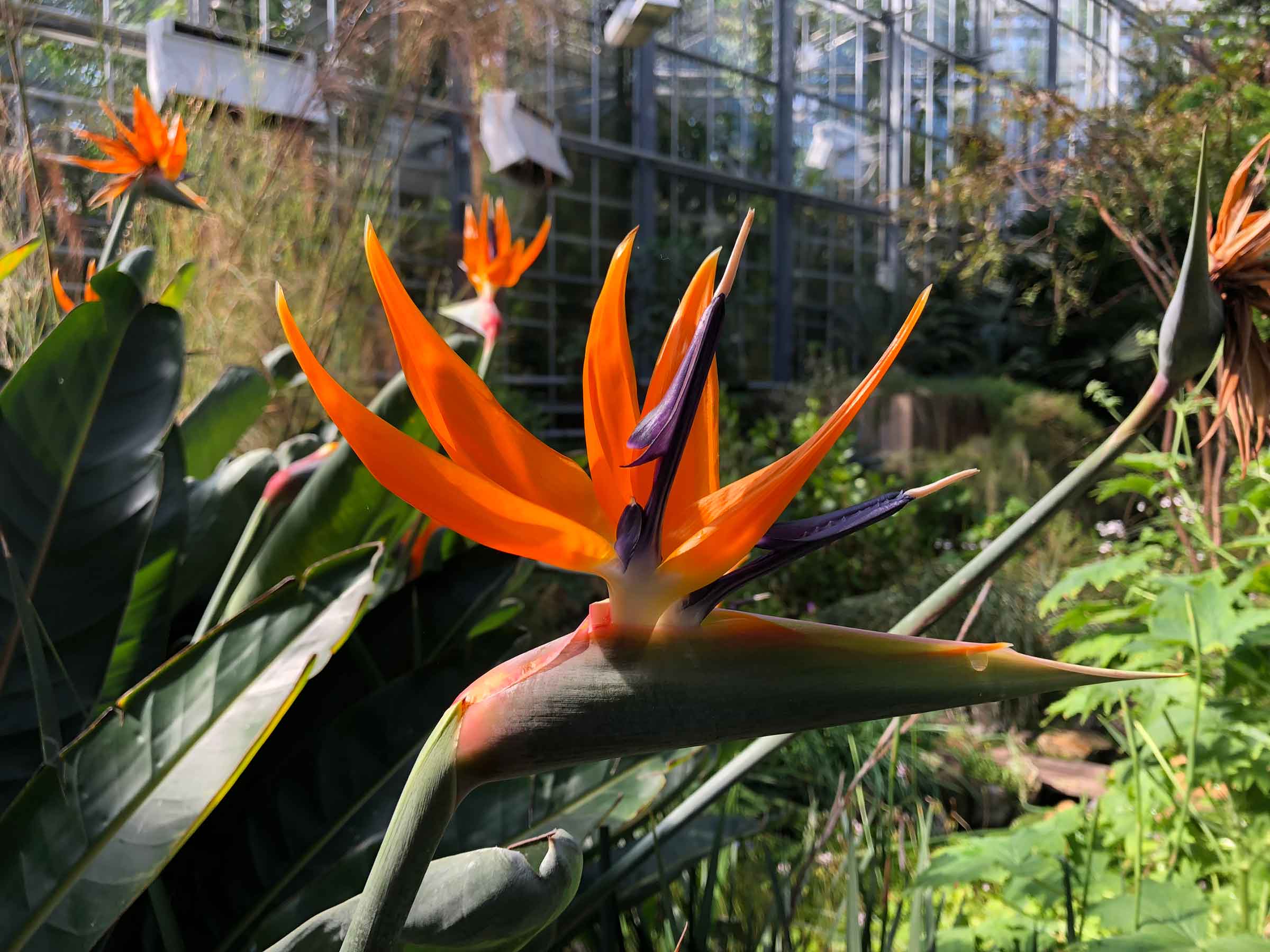
Artis Royal Zoo

After our relaxing visit to the Hortus Botanicus, Sam only had a few more hours left to spare on his Amsterdam sojourn. His birthday was in a few days and this trip was meant to act as an early present. In a fond memory of my travels, Sam confided that he liked the Dutch capital, but that he didn’t think he would have enjoyed himself half as much if he hadn’t spent his time exploring with me. (The feeling was definitely mutual!) With our limited time left together, I asked what he wanted to do and without missing a beat, his choice was the zoo. As a lover of animals, how could I say no!
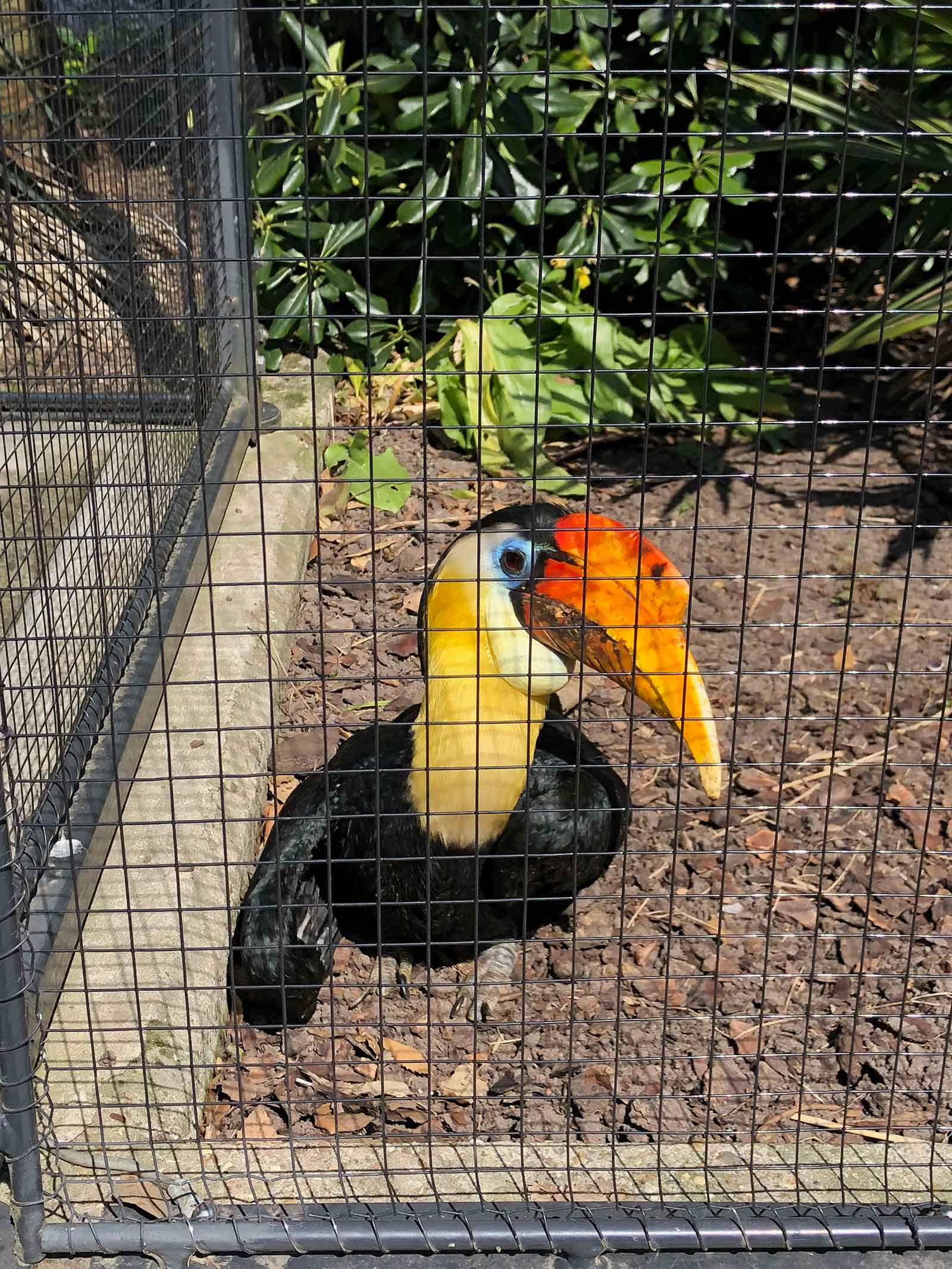
Also in the Plantage, the Artis Royal Zoo was founded in 1838, making it the oldest zoo in The Netherlands. For a completely urban zoo, I found the exhibits to be very impressive and the animals appeared to be well cared for. Today there are over 500 species of animals at Artis, including the aquatic life in the aquarium, also included in the ticket price.
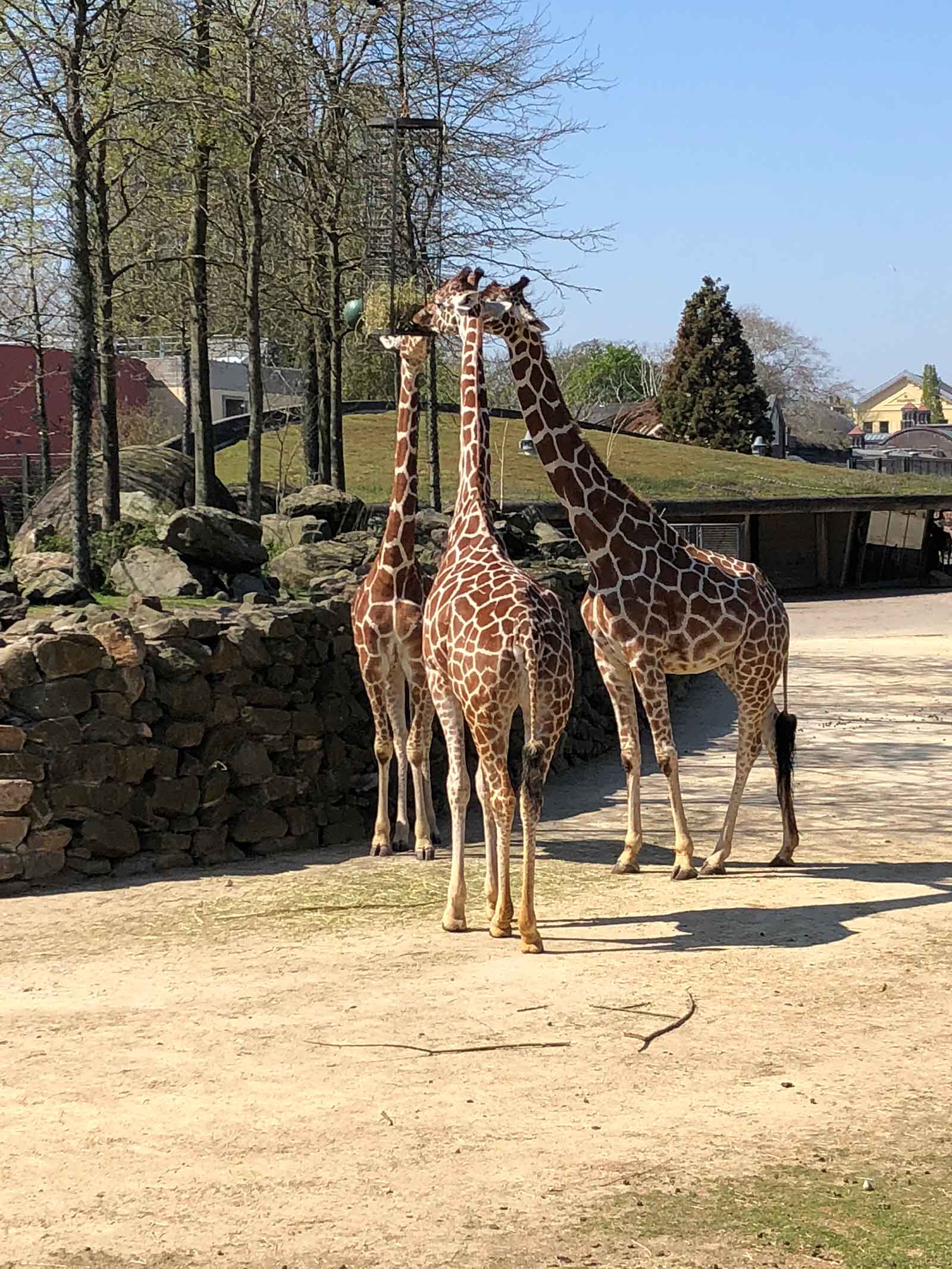
While admiring the vultures and flamingos, Sam and I came across a group of school children kneeling on the concrete and sketching the birds while a zoologist explained the basics of avian biology to the kids. Their teacher noticed Sam and I admiring her students’ artwork (pretty impressive drawings for ten or eleven year olds!) and asked us where we were from. She relayed that this wasn’t a simple field trip to the zoo, but rather an aspect of the integrated learning promoted in the Dutch school system. Kids are taken out into the world to learn about biology, chemistry, painting, ballet, opera and the like. There is a total immersion with and blending of Dutch culture and academics, all in the hopes of creating well-rounded students and adults.
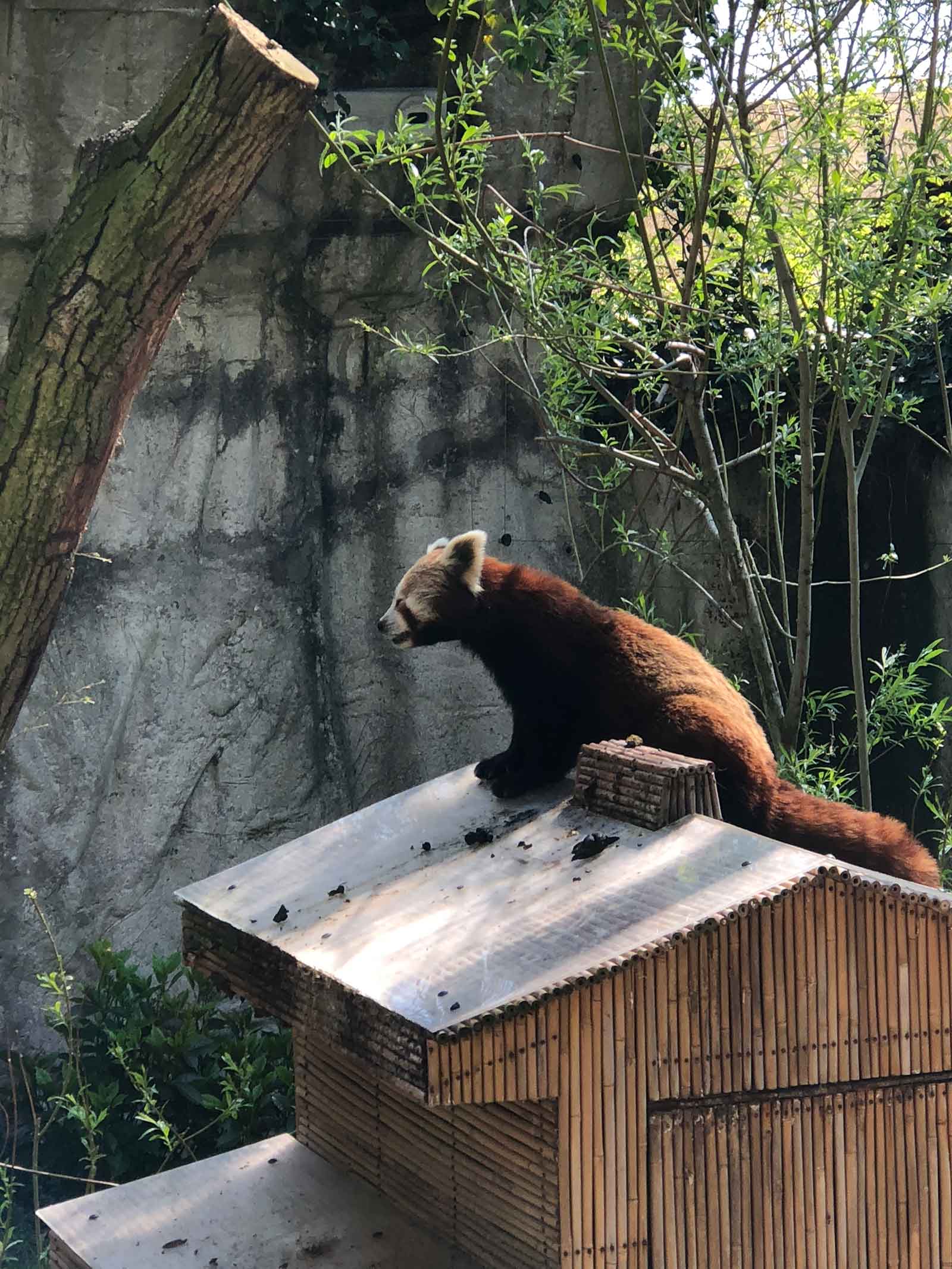
Touring the zoo made for a nice synthesis of my time in Amsterdam thus far with Sam. Our friendship may have only been a few days old, but it felt like we had known each other for years. Traveling can do that to you. We bonded over art, nature, animals and food (more on that below) and somehow I felt like I knew Sam better than I knew my friends of a decade+ back in New York. Travel creates a little bubble where everything else in your life drops away and the only things of importance are happening to you in that moment. Sam and I are the only two people who experienced Amsterdam exactly the way we did and this will forever bond us, even if we fall in and out of touch over the years. Travel creates links that can’t be severed.
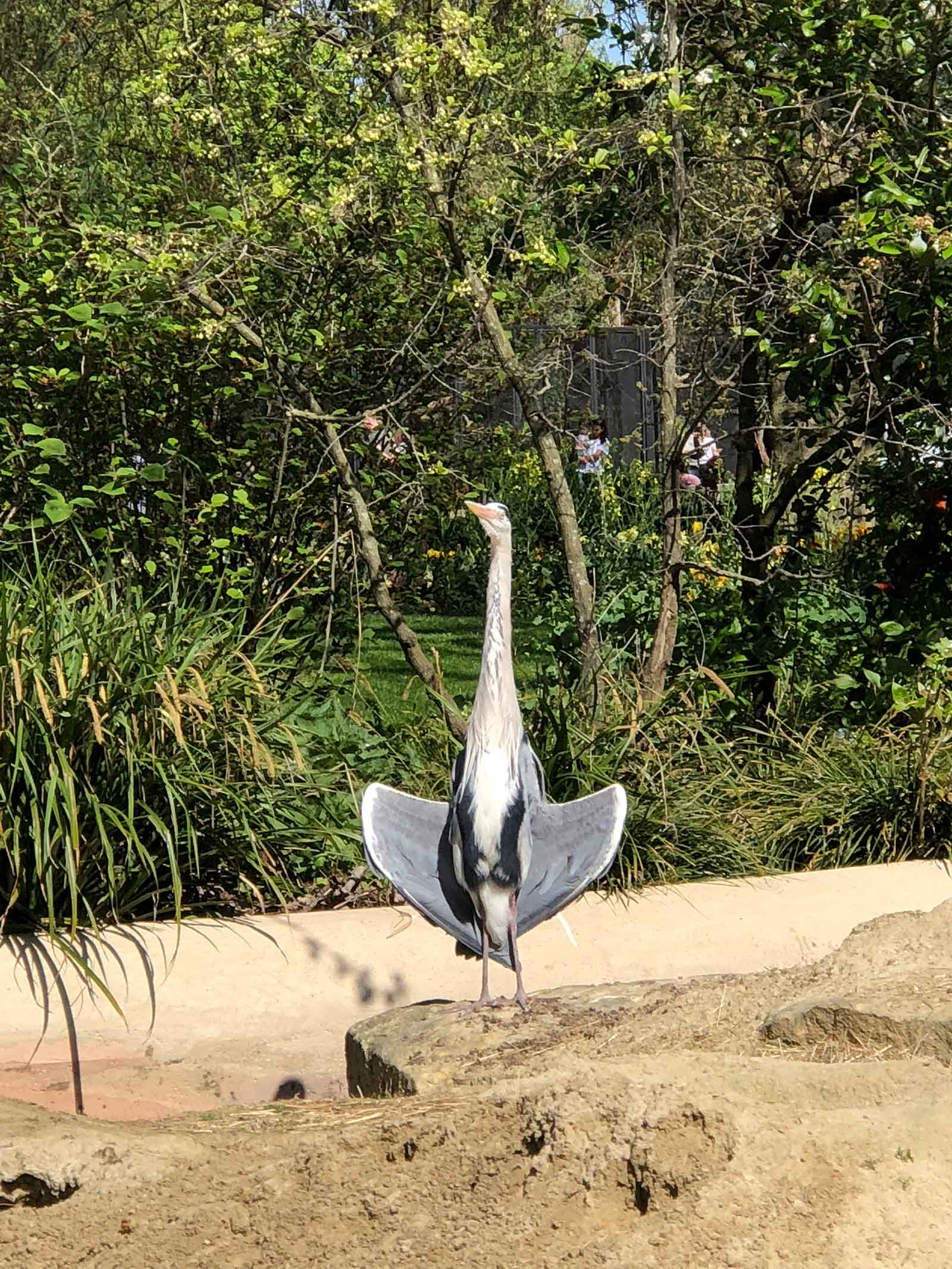
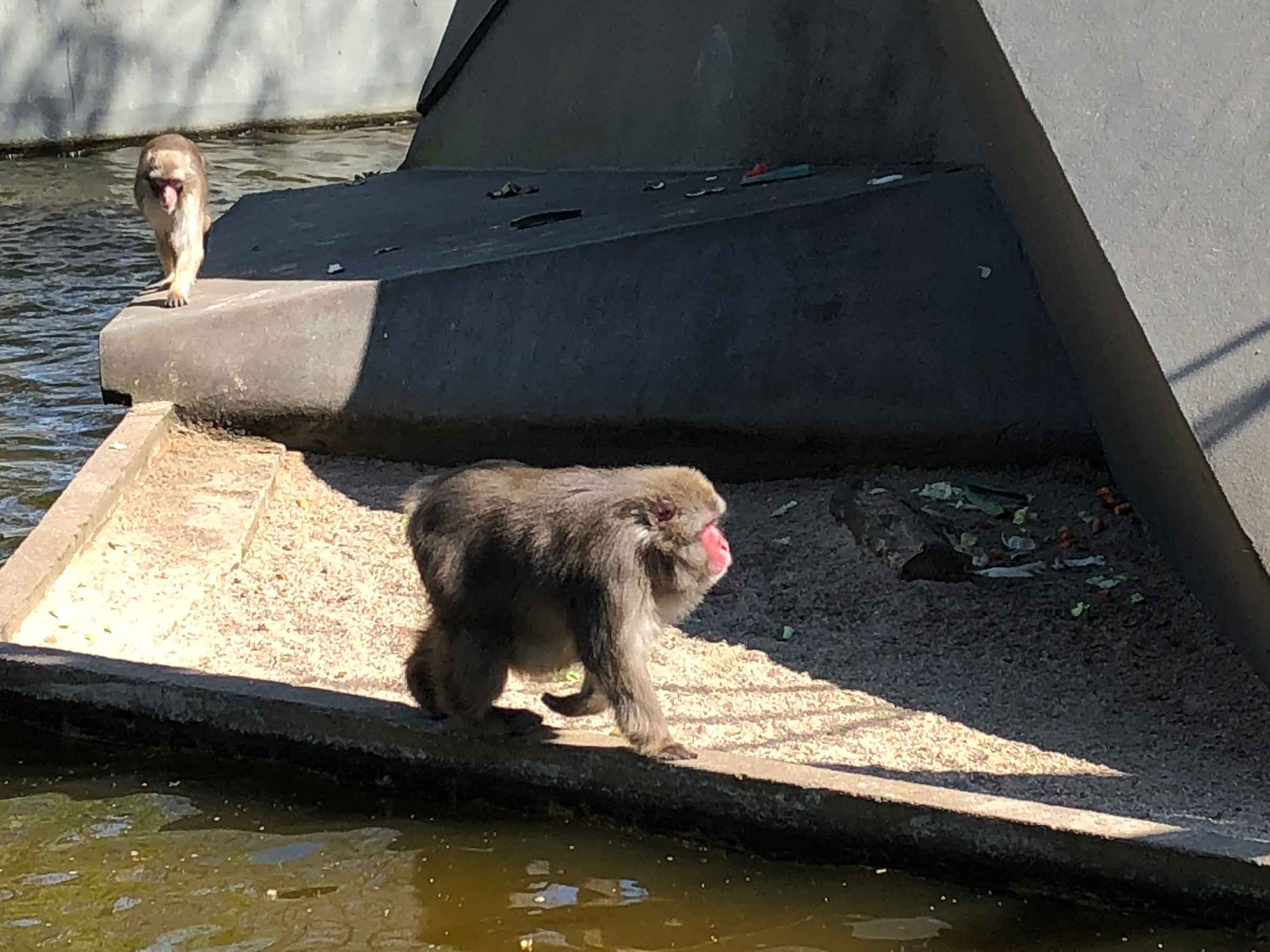
Vegetarian/Vegan Food in Amsterdam
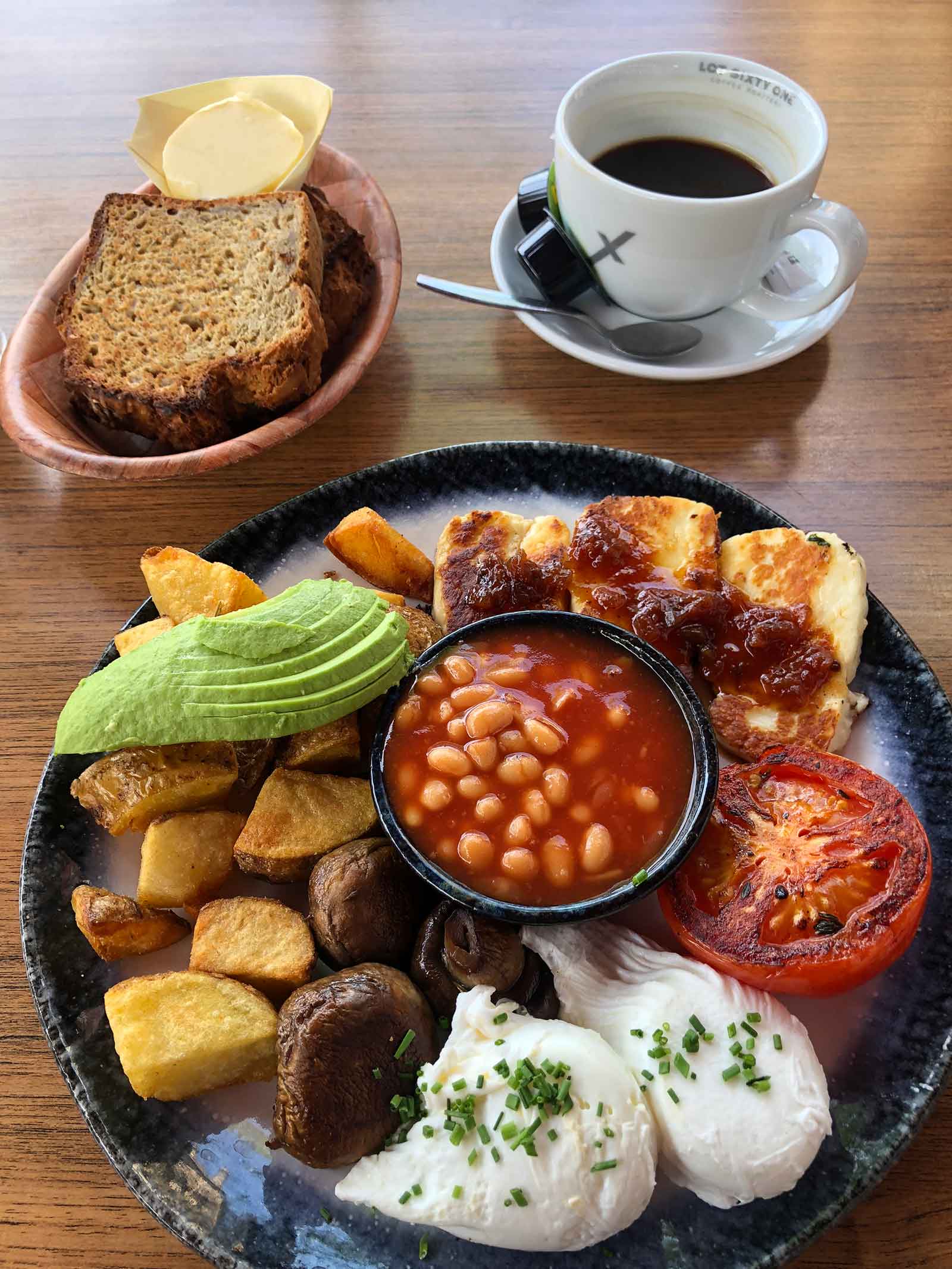
Sam wasn’t a vegetarian or vegan, but he was totally up for going to vegetarian restaurants with me. According to recent studies, The Netherlands has one of the fastest growing vegan populations in the world, which isn’t surprising given how much attention the Dutch give to the environment and the effects that eating meat has on our planet. The day before, Sam and I combined a visit to Amsterdam Noord, the district reachable by ferry across the River IJ, with a pit stop at Cafe de Ceuvel, an excellent vegan restaurant with an extra-special sustainable agenda.
Amsterdam Noord is seldom visited by tourists; for a city that has struggled with overtourism for decades, crossing the river gave us a glimpse of an oft-neglected slice of the capital’s urban makeup. For decades, Amsterdam Noord was a working class neighborhood full of dockyards and shipping containers. Blue collar families built unique wooden houses along the wharf; over the years the area slowly atrophied into an undesirable, industrial wasteland until young people, who had been priced out of Amsterdam’s central district, began moving across the river and revitalizing the area.
There are now several newly-opened museums taking up residency in the former shipping warehouses, including the not-yet-opened-at-the-time-of-my-visit NDSM cultural center, which currently boasts large scale contemporary art pieces and graffiti/street art murals. Trendy nightclubs and hipster boutiques now populate the semi-dilapidated wooden houses on the shore. The ferry to Amsterdam Noord departs directly behind the central train station and is completely free.
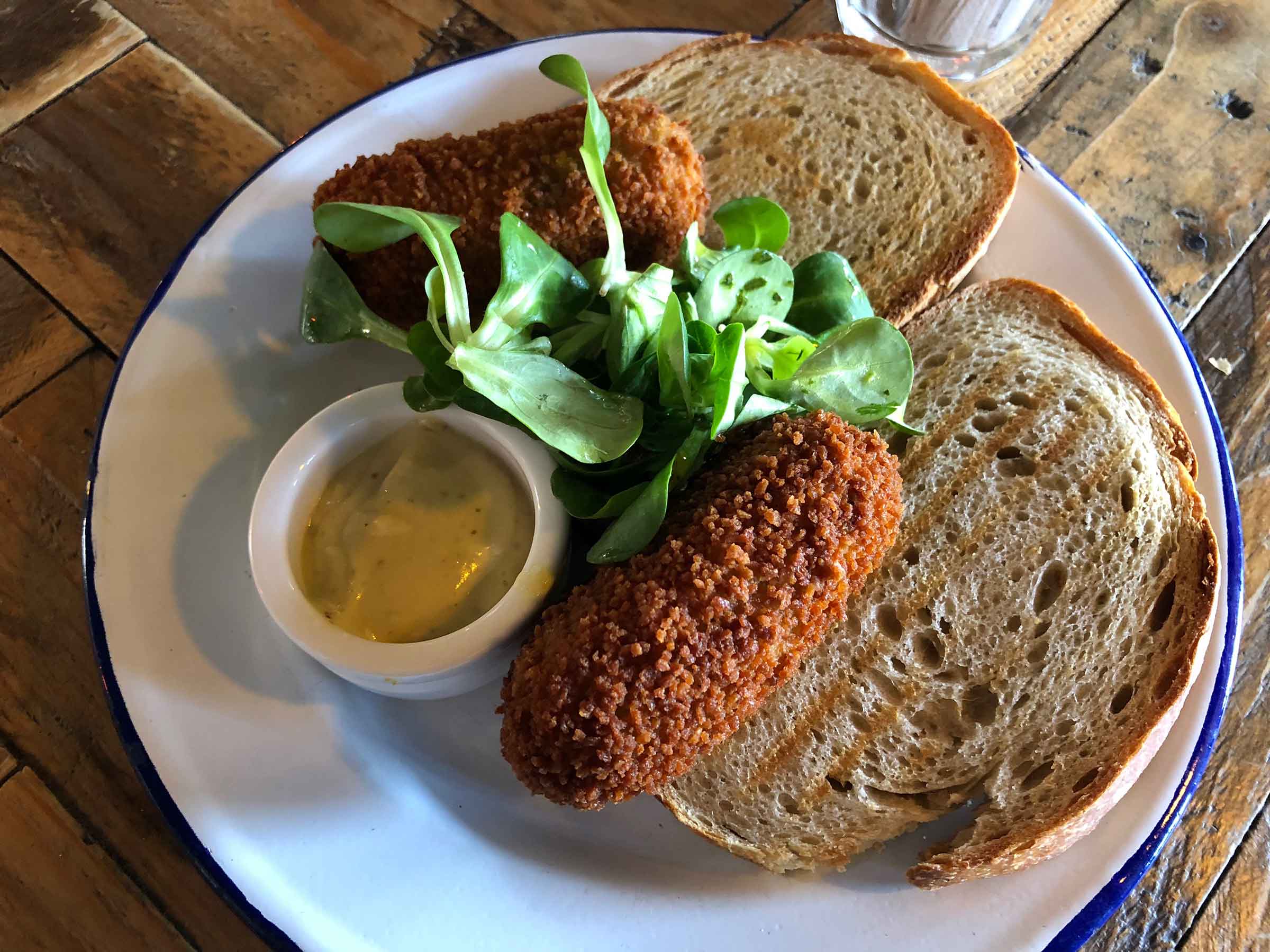
The whole reason we ventured to Amsterdam Noord in the first place was to check out De Ceuvel and their vegan cafe. De Ceuvel is an environmentally-friendly workspace and artist colony that also features a cultural center, floating bed & breakfast and popular cafe open to the public. The entire cafe, from the walls to the tables and chairs, has been fashioned from recycled materials. There is a greenhouse on the roof in which all the herbs and greens are grown; oyster mushrooms take root on the discarded coffee grinds ensuring nothing goes to waste. Even the beer is organic! Sam and I enjoyed a light, but tasty lunch at the cafe and I highly recommend checking out what they do over here on the other side of the city.
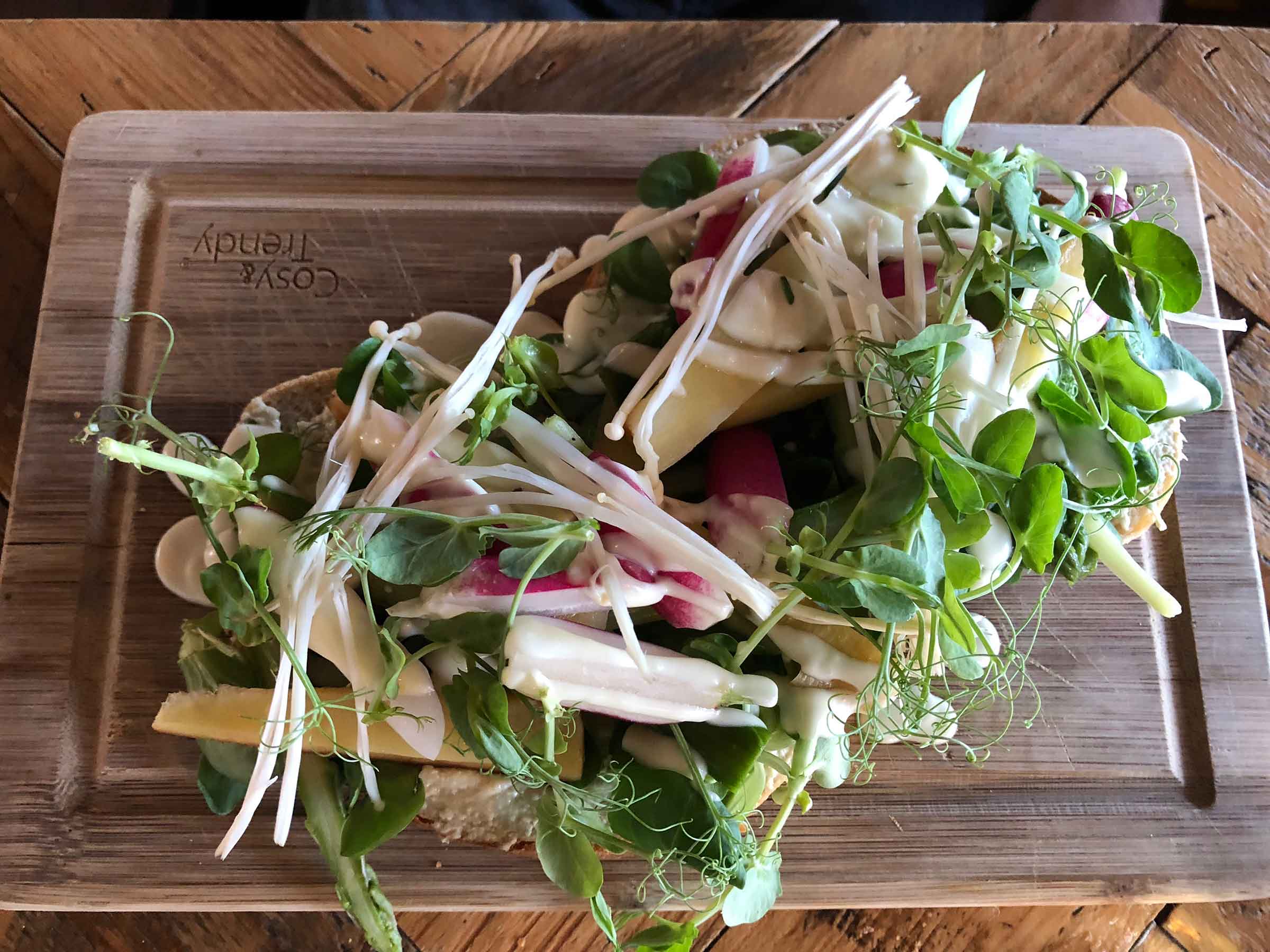
After Sam’s departure, I was feeling down and knew a good meal would cheer me up. If you don’t eat meat, you shouldn’t pass up a trip to Golden Temple, Amsterdam’s oldest all-vegetarian restaurant. They specialize in Indian and Mexican cuisines, but there’s a little something for everyone on the menu. Golden Temple remains very popular and this was the only restaurant where I had to wait more than 30 minutes to be seated. I tried one of the Mexican-inspired entrees, and it was delicious!
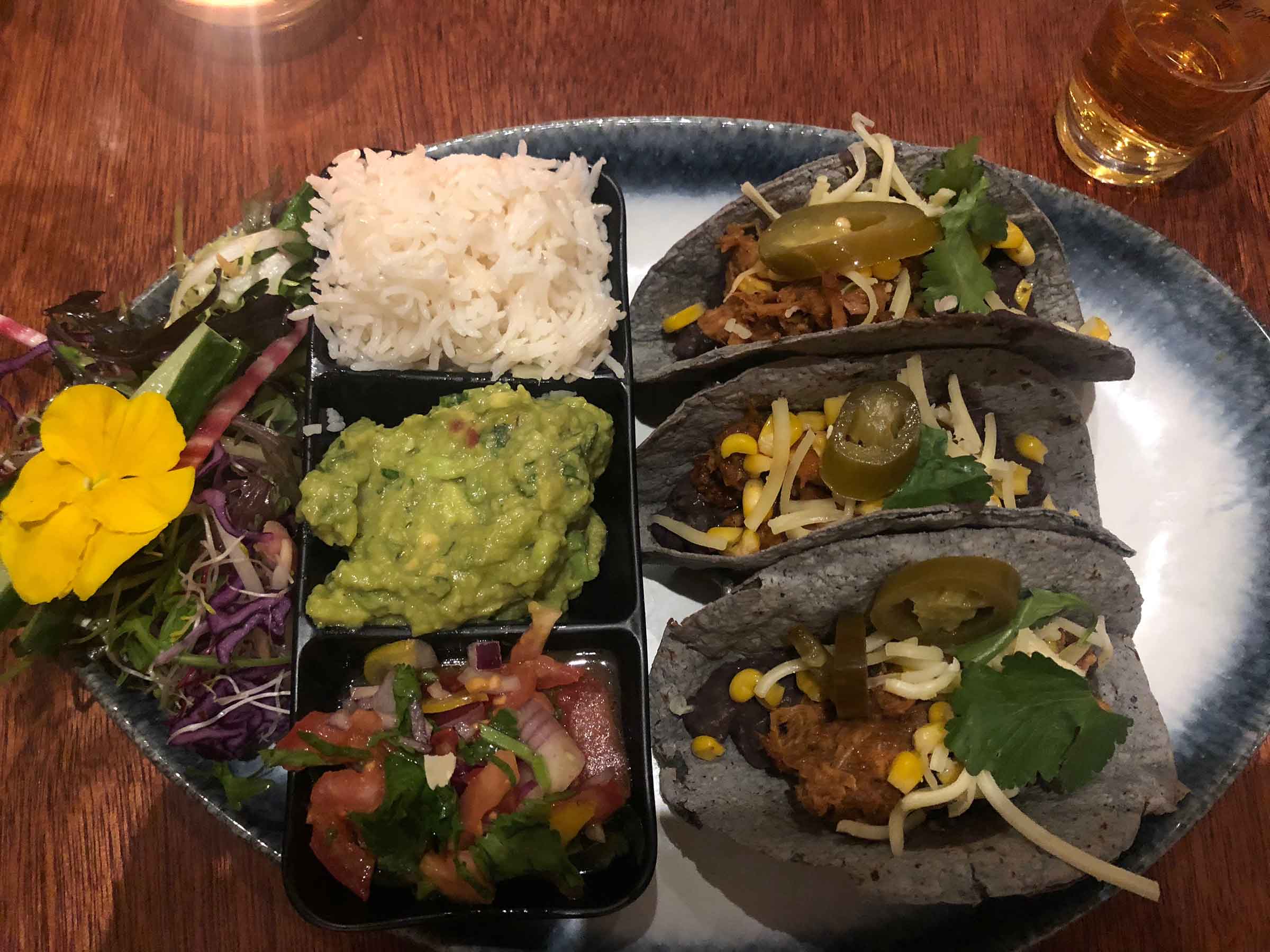
My favorite restaurant in Amsterdam was Hearth, an all-vegan spot opened by two brothers in their quest to spice up the burgeoning vegan food scene. (Hearth has since closed its original location in De Pijp and according to their website will be opening in a new space post-Covid.) Whereas Cafe de Ceuvel was all about sustainability, Hearth was about turning dishes you thought you knew on their heads. A deconstructed tiramisu served in a coconut shell or seaweed wrapped tofu “sushi” elevated beloved recipes to mind-blowing heights. I ate at Hearth four times during my stay, which I think might be a repeat-restaurant record for me.
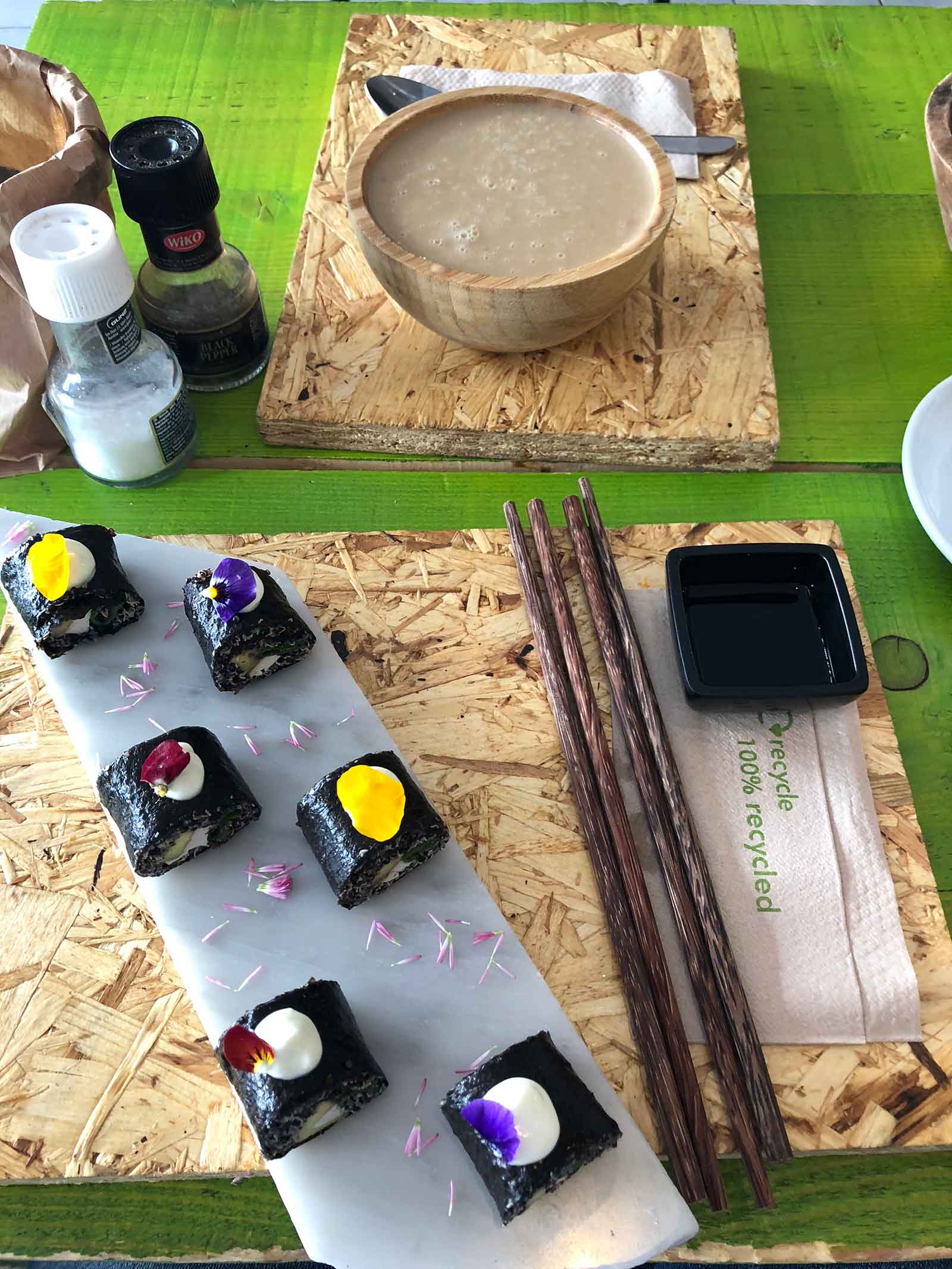
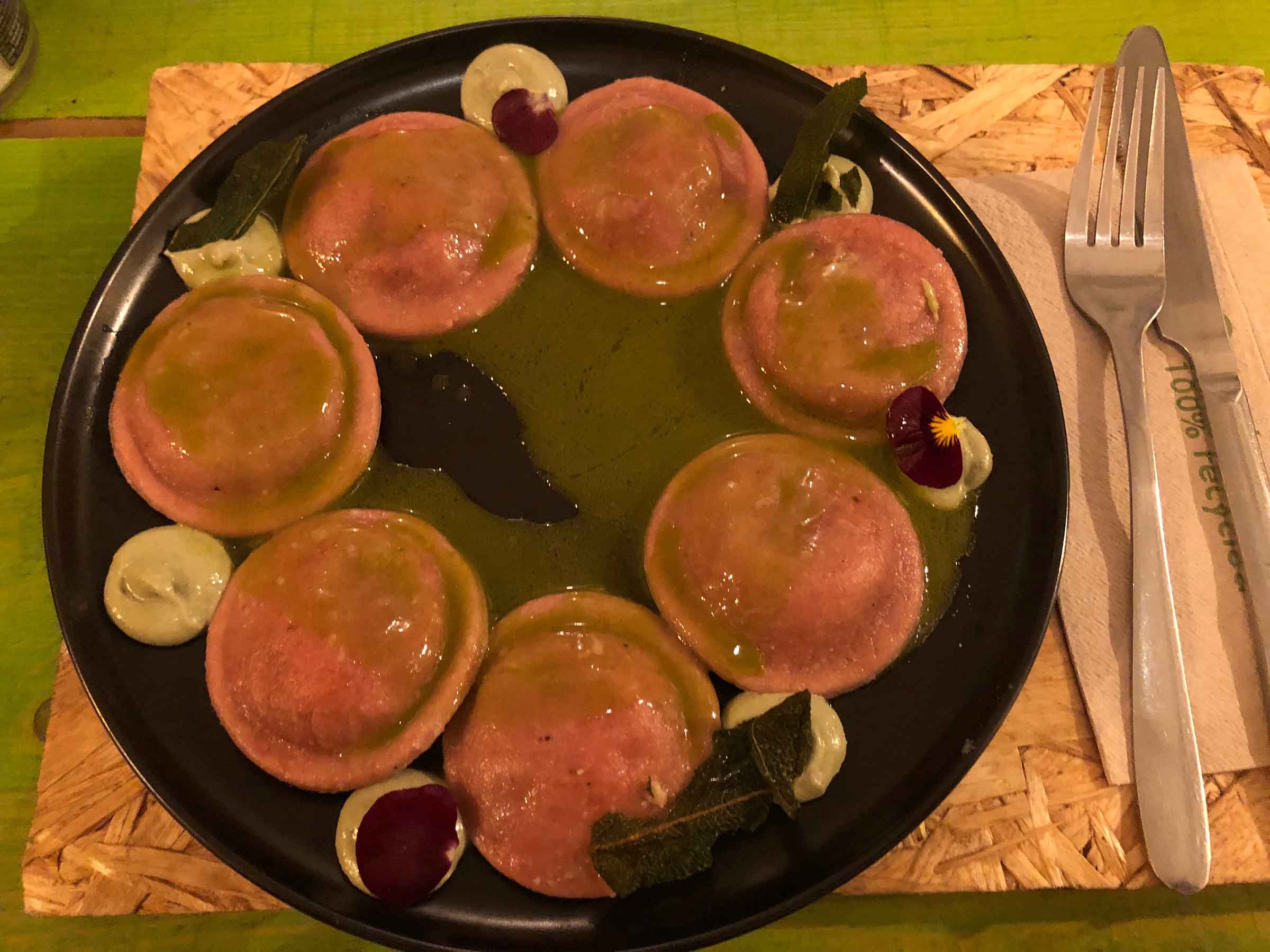
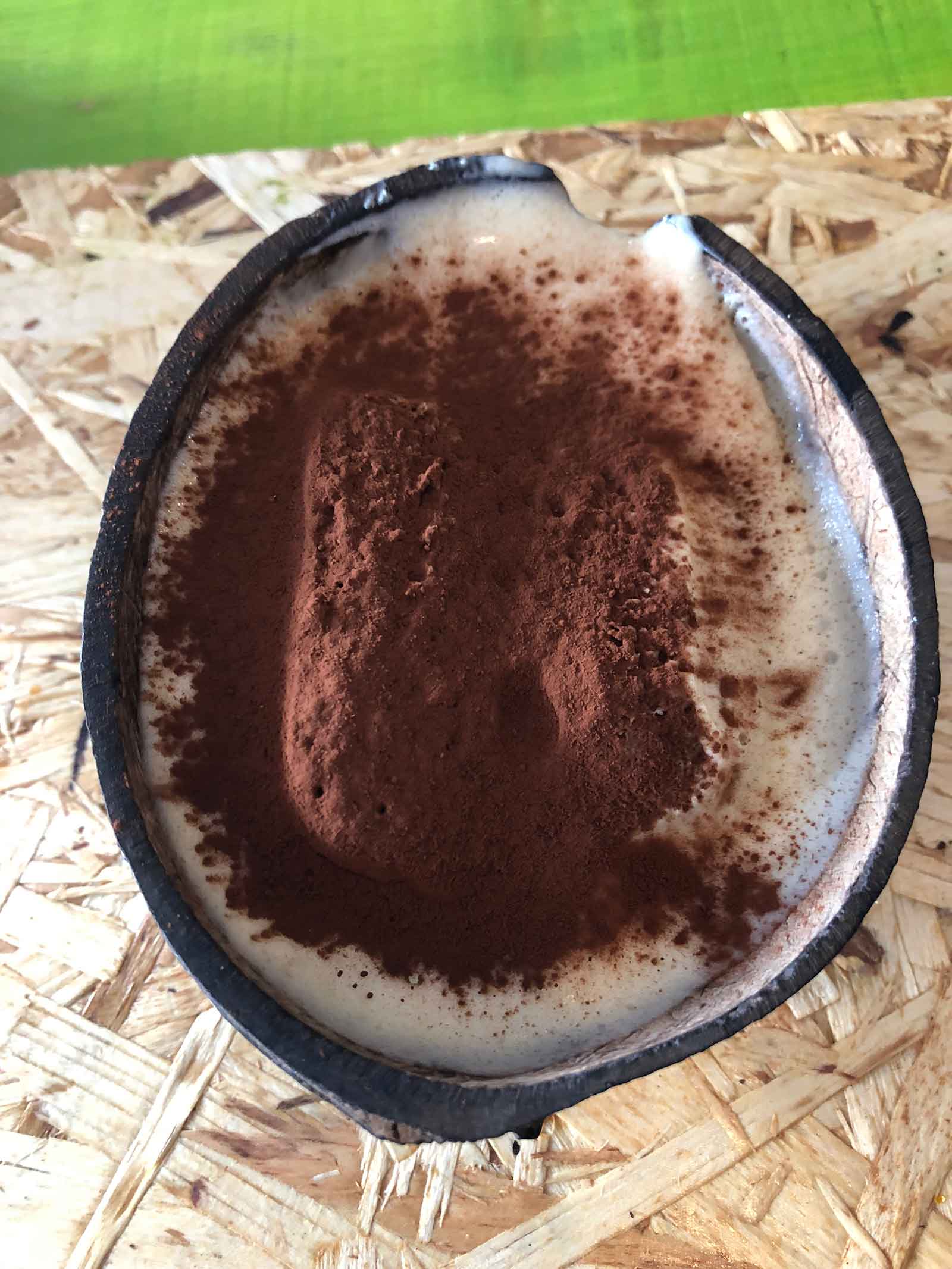
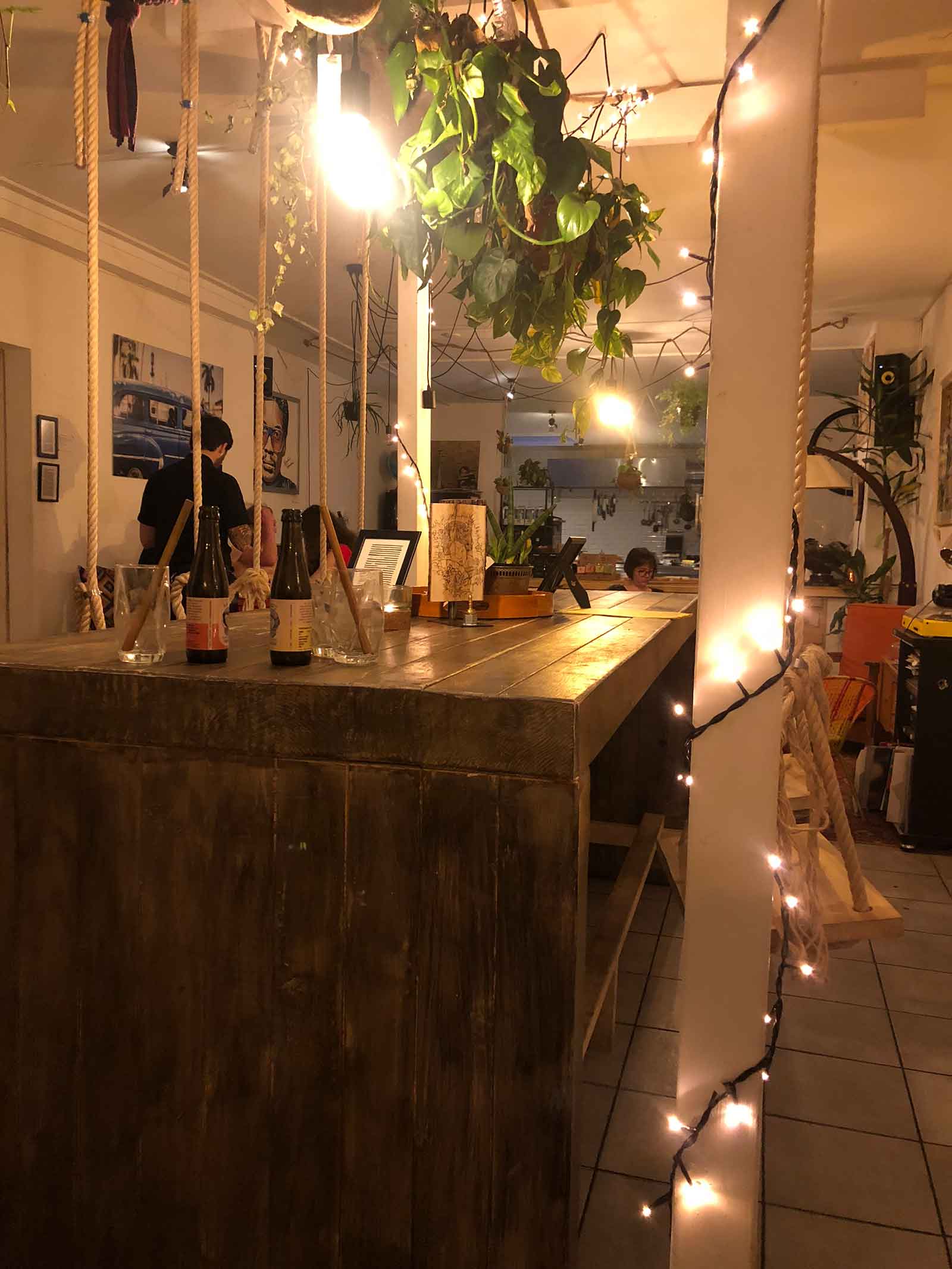
For being the greatest metropolis in The Netherlands, Amsterdam has a lot of green going for it. The parks, the flowers, Hortus Botanicus and Artis, the eco-friendly food scene- the Dutch have no interest in turning their capital into a concrete jungle. The Dutch have their priorities in the right place and truly are an example for the rest of the world to follow. As I discussed global politics with Sam over dinner one night, we both agreed that no country has a perfect system, but the Dutch come pretty damn close.


